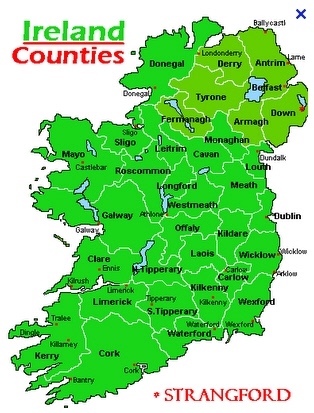
VISIT SOUTHERN IRELAND & SEE THE RING OF KERRY AND THE DINGLE PENINSULAR
Being now in our 70's, Jacqueline and I have travelled and seen much of the world.
There was a place we had never been to that was much nearer home than most of the places we have visited on our list of "100 things to see and do". That place was :

THE EMERALD ISLE
Jacqueline has two uncles, one who is still alive, who are Irish. She remembers, as a child, singing with them many of the old Irish songs. These memories caused her to say many times to me - I'd love to visit Ireland.
Personally, during the years of conflict between North and Southern Ireland a trip over there never appealled to me. Now that hostilities are over and now that it is expensive for us to get travel insurance to more exotic places there was no reason why Jacqueline's wish shouldn't be fulfilled.
There was also a different mode of transport available that we had not used for a long time:
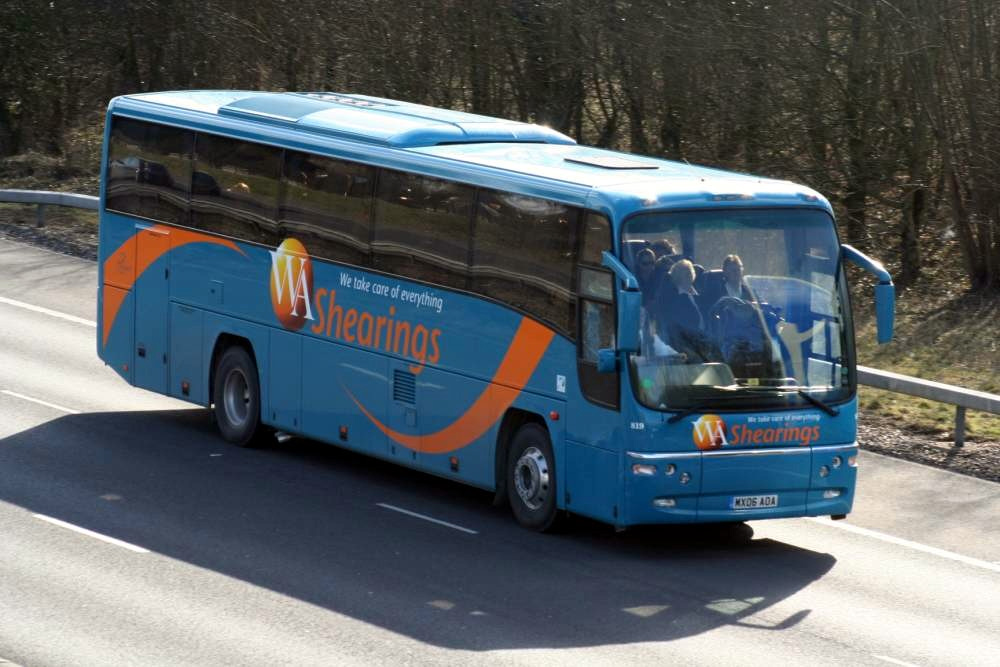
A coach holiday with a Travel Company called SHEARINGS.
From their brochure we chose this one :
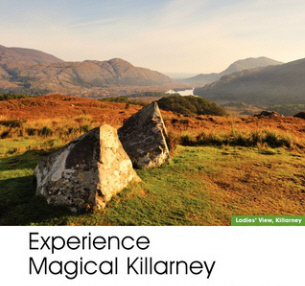
Seven days, half board, at £469 per person. June 16th - June 22nd 2012.
We were picked up by a feeder coach at Cobnor Road Woodseats and taken to Shearings Interchange at Normanton. There were several stops to pick up passengers at Sheffield, Rotherham , Chapletown etc which took over two hours before we transferred to our tour coach, that was only a fortnight old.
With only 17 people aboard we were driven to Holyhead in Anglesey for our 3 hour crossing of the Irish Sea aboard the ferry Ulysses. From the ferry terminal we were driven to our hotel in Dublin where we were joined with more tour passengers who had chosen to come by plane :
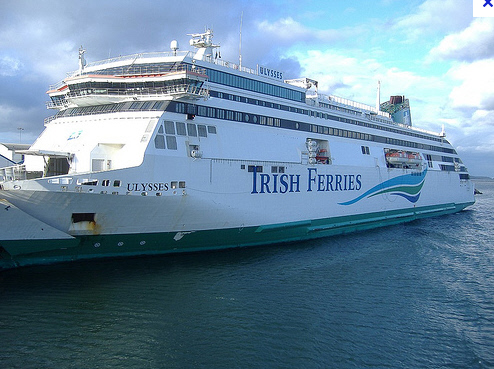
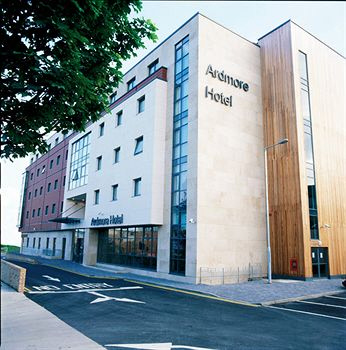
The ferry ULYSEES. The ARDMORE Hotel, Dublin
Our coach tour now comprised about 30 people and we quickly became acquainted. Somehow we spent most of our meals with the same guests:
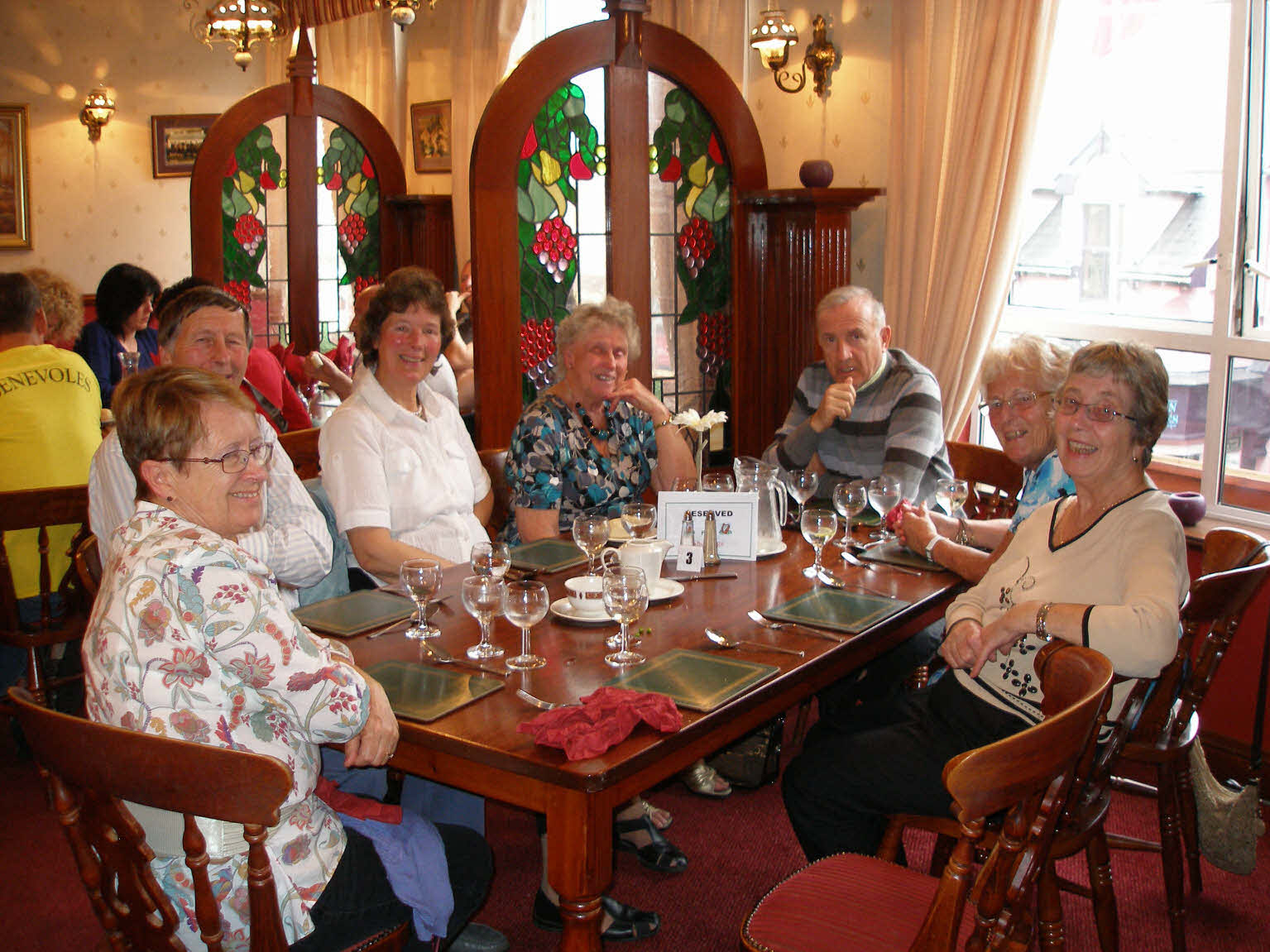
Carol & Pepe from Alicante, (opposite ends of table). John & Elizabeth from Scarborough ( John was a retired BT employee). Joyce & Margaret from West Yorkshire. (both widows ).
Our second day began with a tour of Dublin.
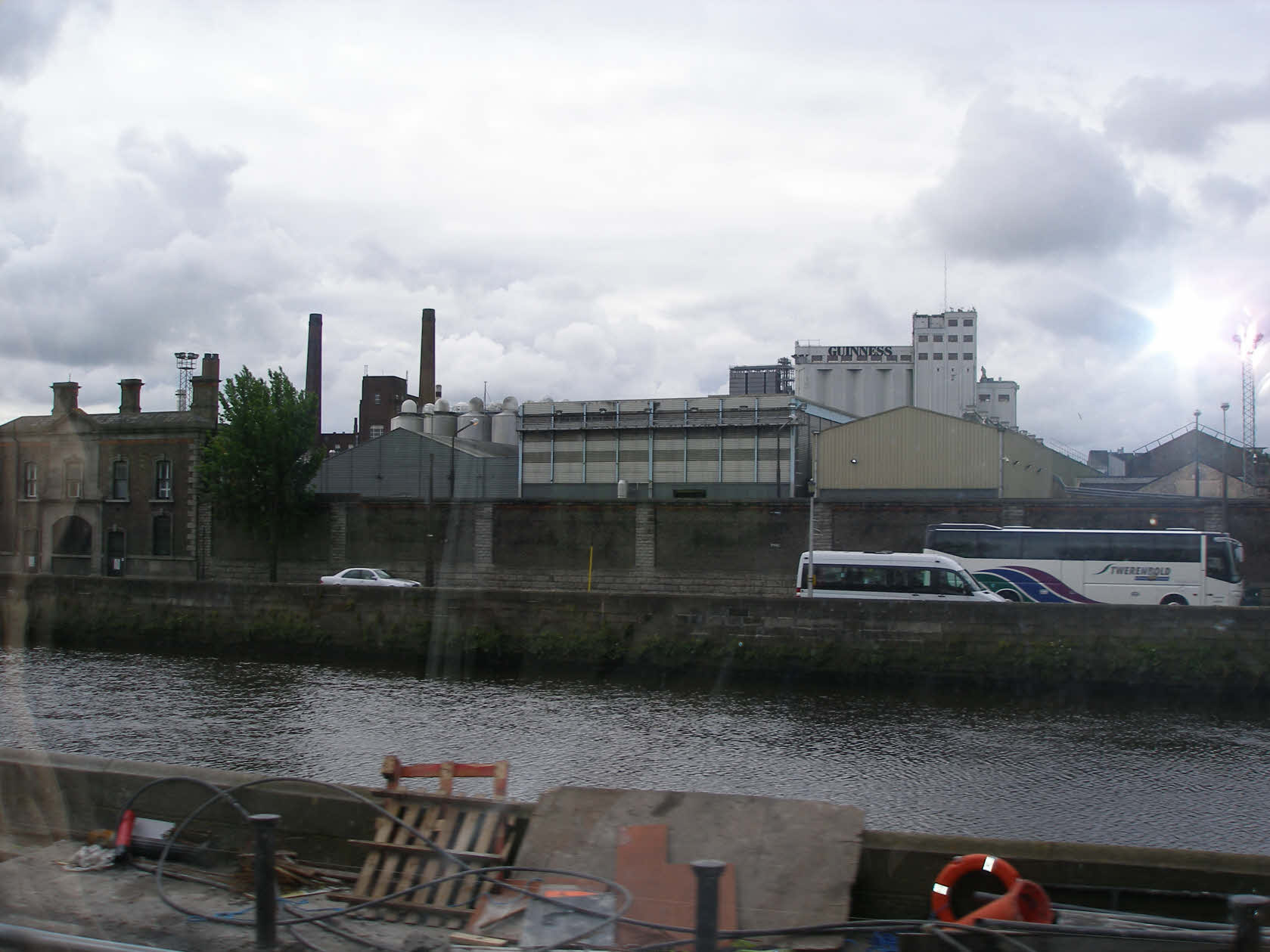
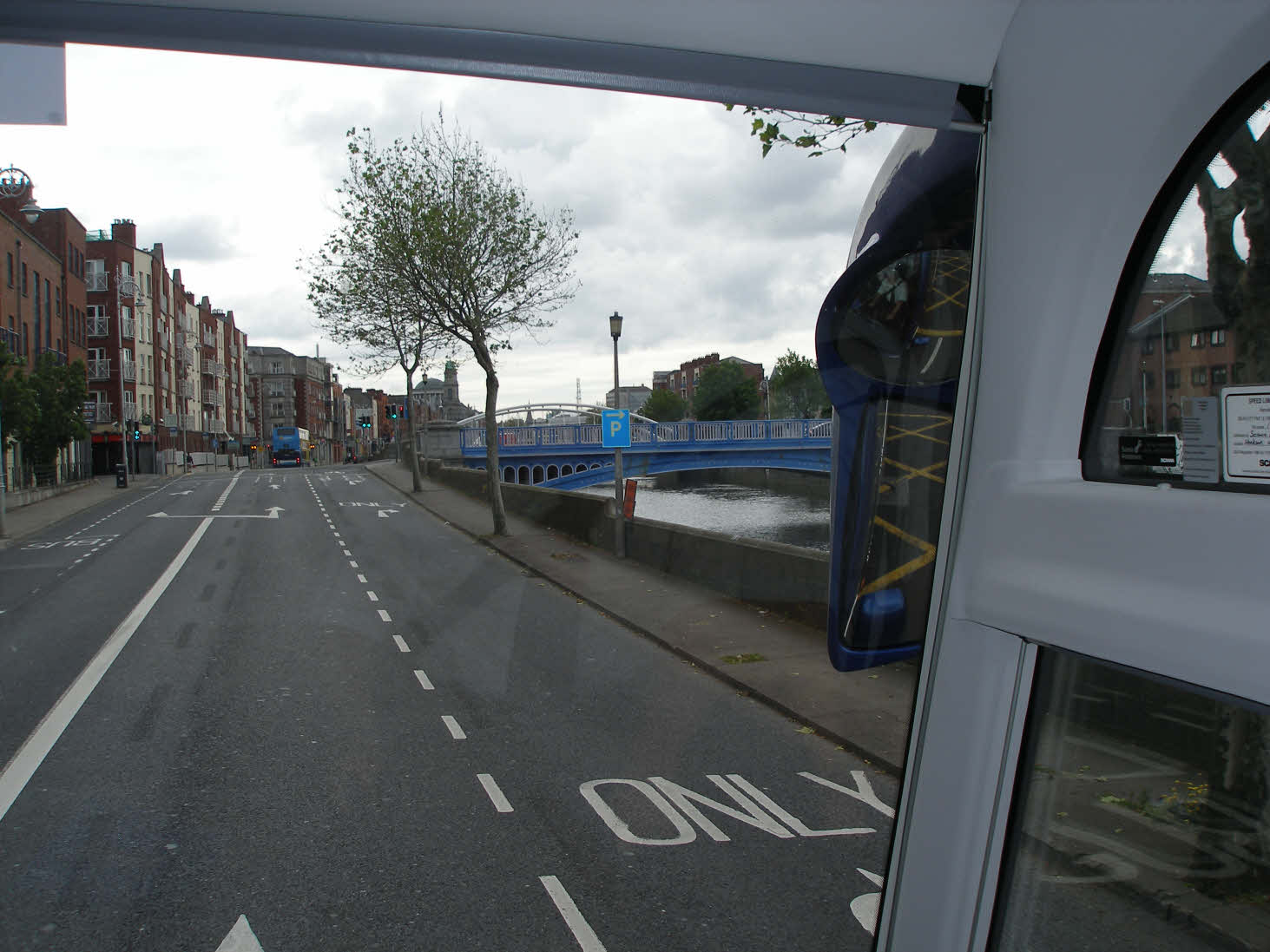
On the left, probably the most important building in Dublin - The Guinness brewery.
The river LIFFEY flows through the centre of Dublin and provides most of the town's drinking water. The bridge is called the Rory O More Bridge.
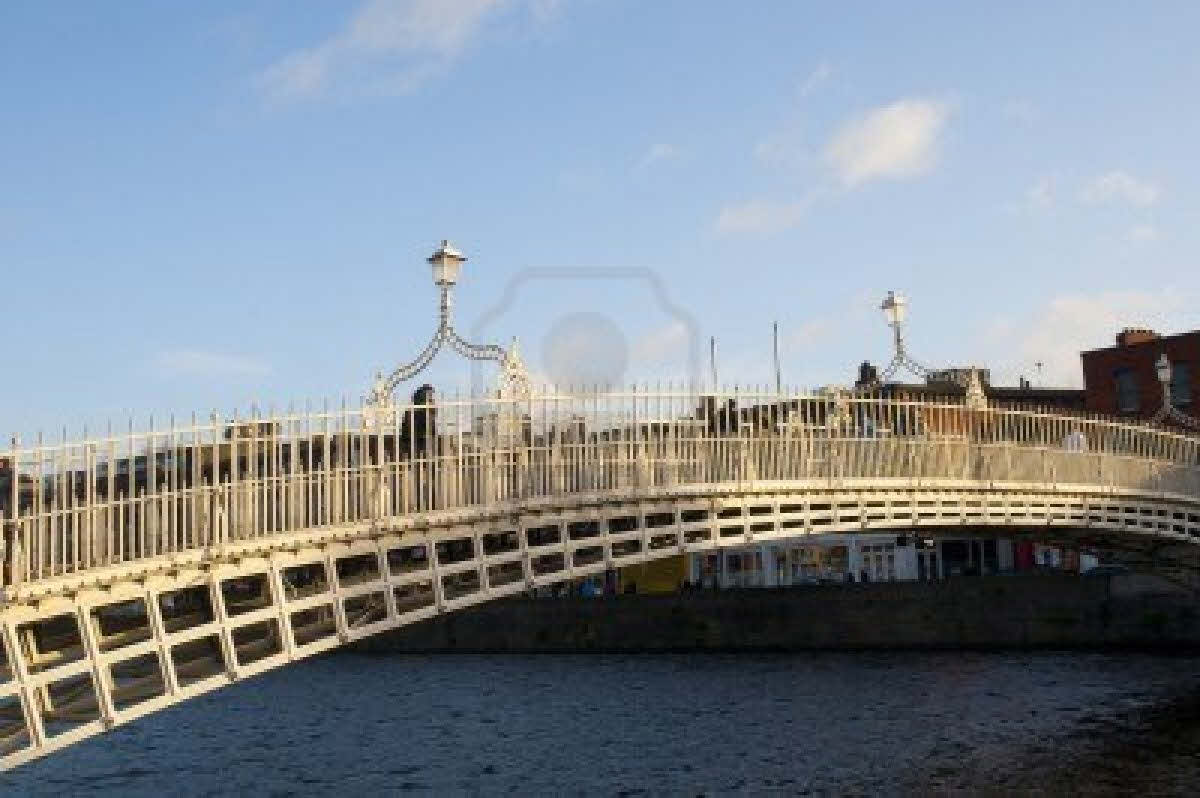
And this one is called Half-Penny-Bridge because that was the original charge to cross it.
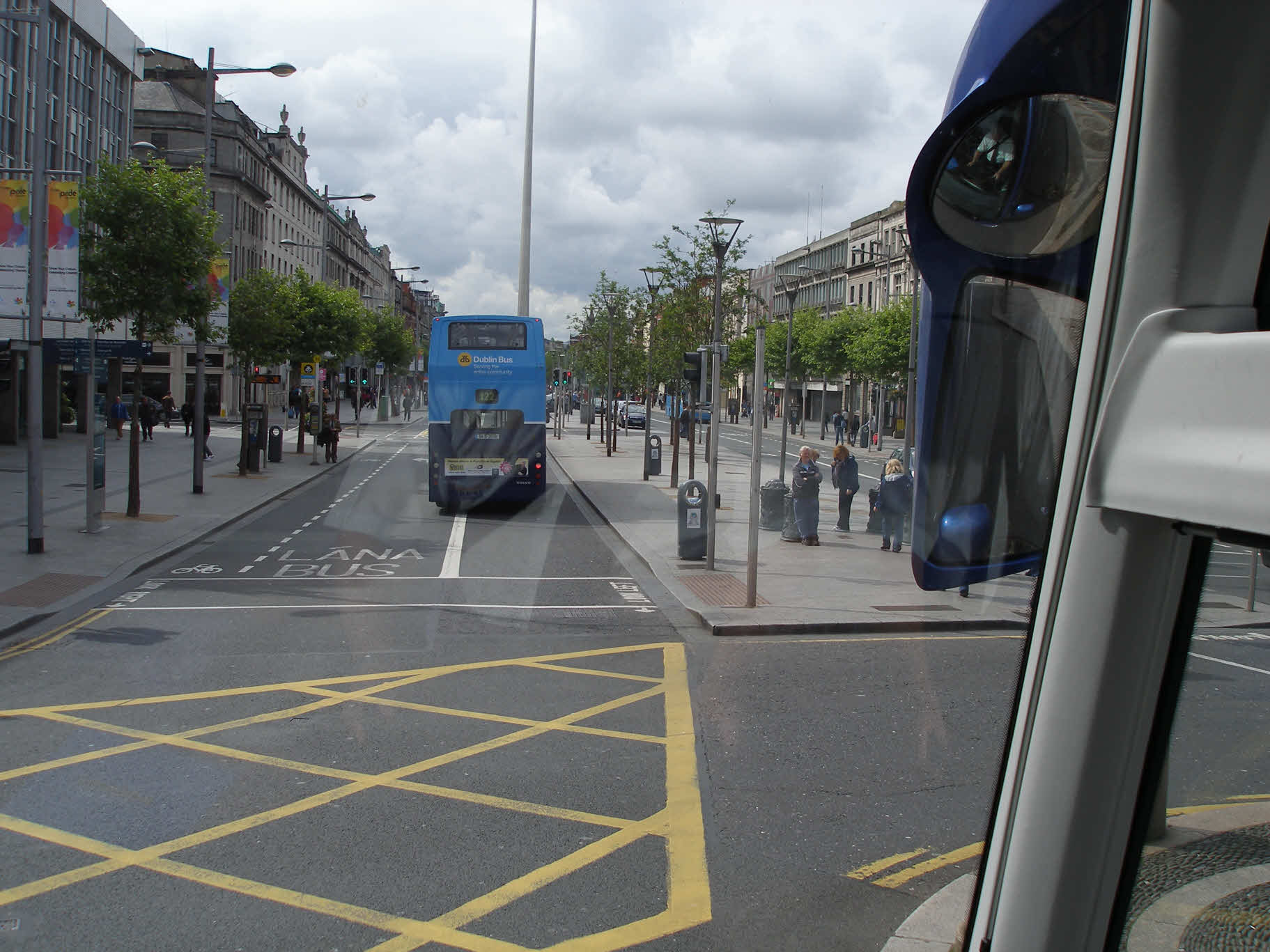
The Millennium Spire 398 feet high in O Connell Street. (Trust the Irish to mount it on the roof of a bus)
Our driver/guide continued the tour through the centre of Dublin pointing out items of interest like :
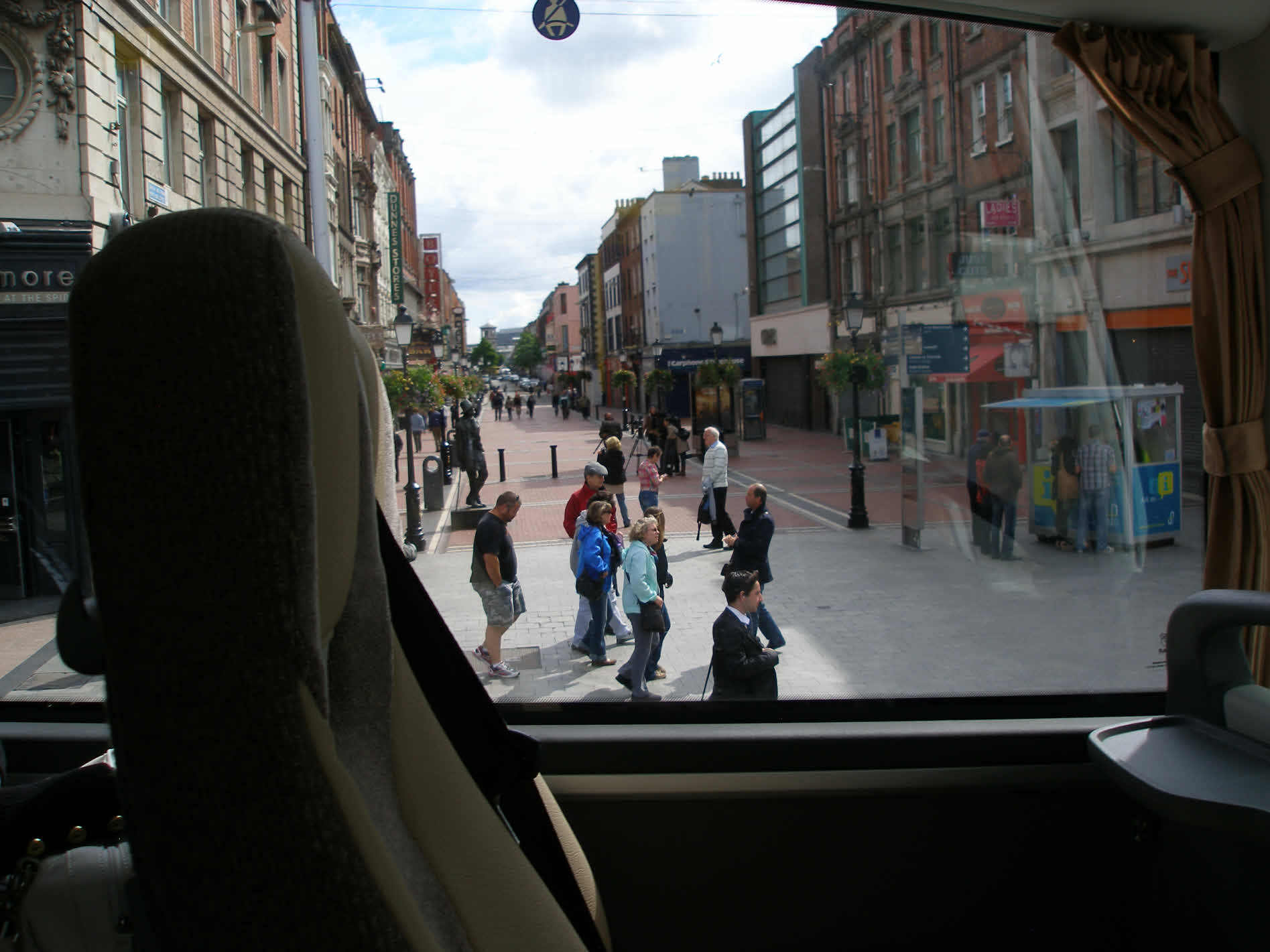
The statue of James Joyce who wrote Ulysses. ( he's just left of the two small street ballards)
Then it was this lady :
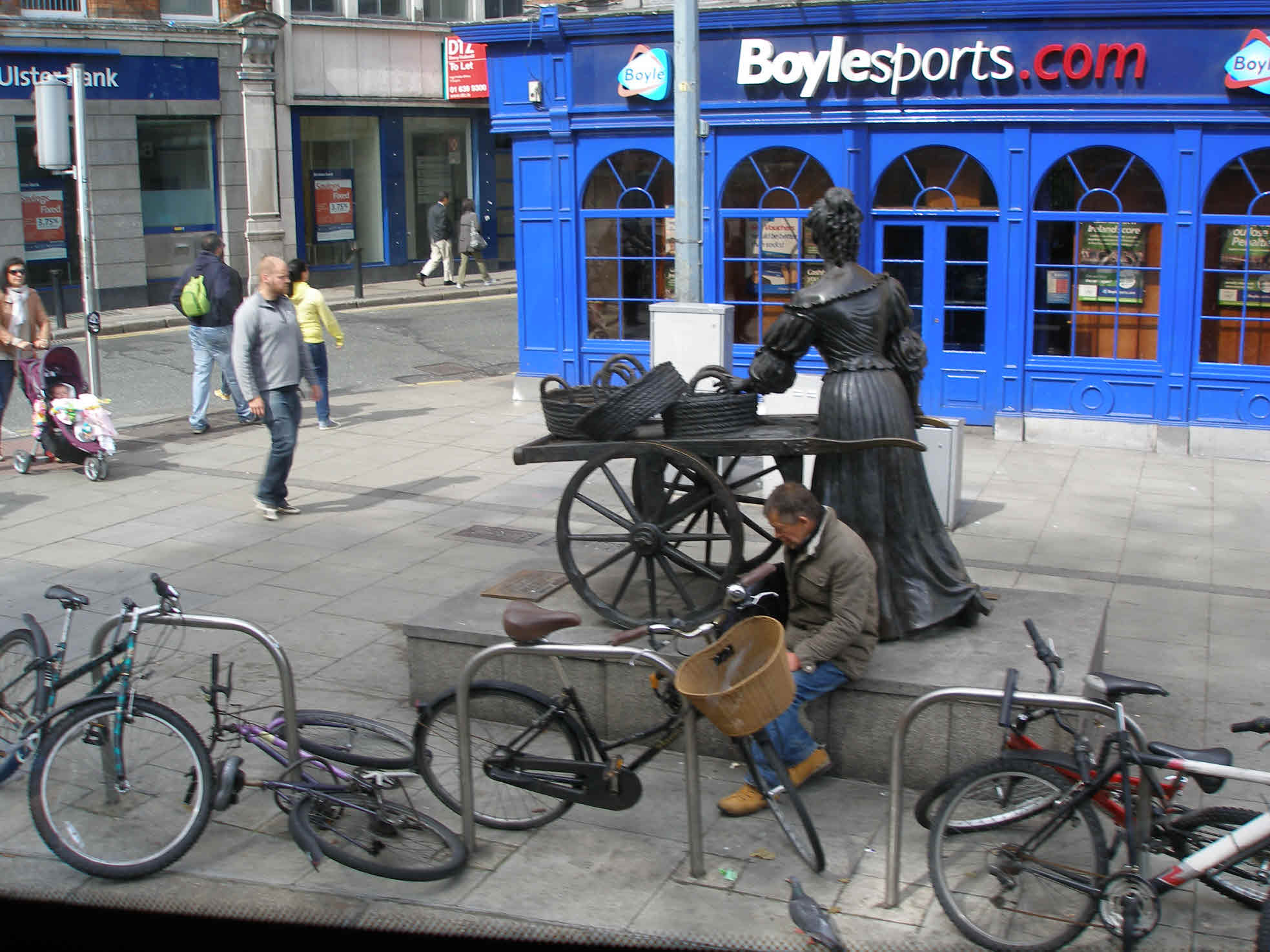
Not sure who she is? Let's look from the front:
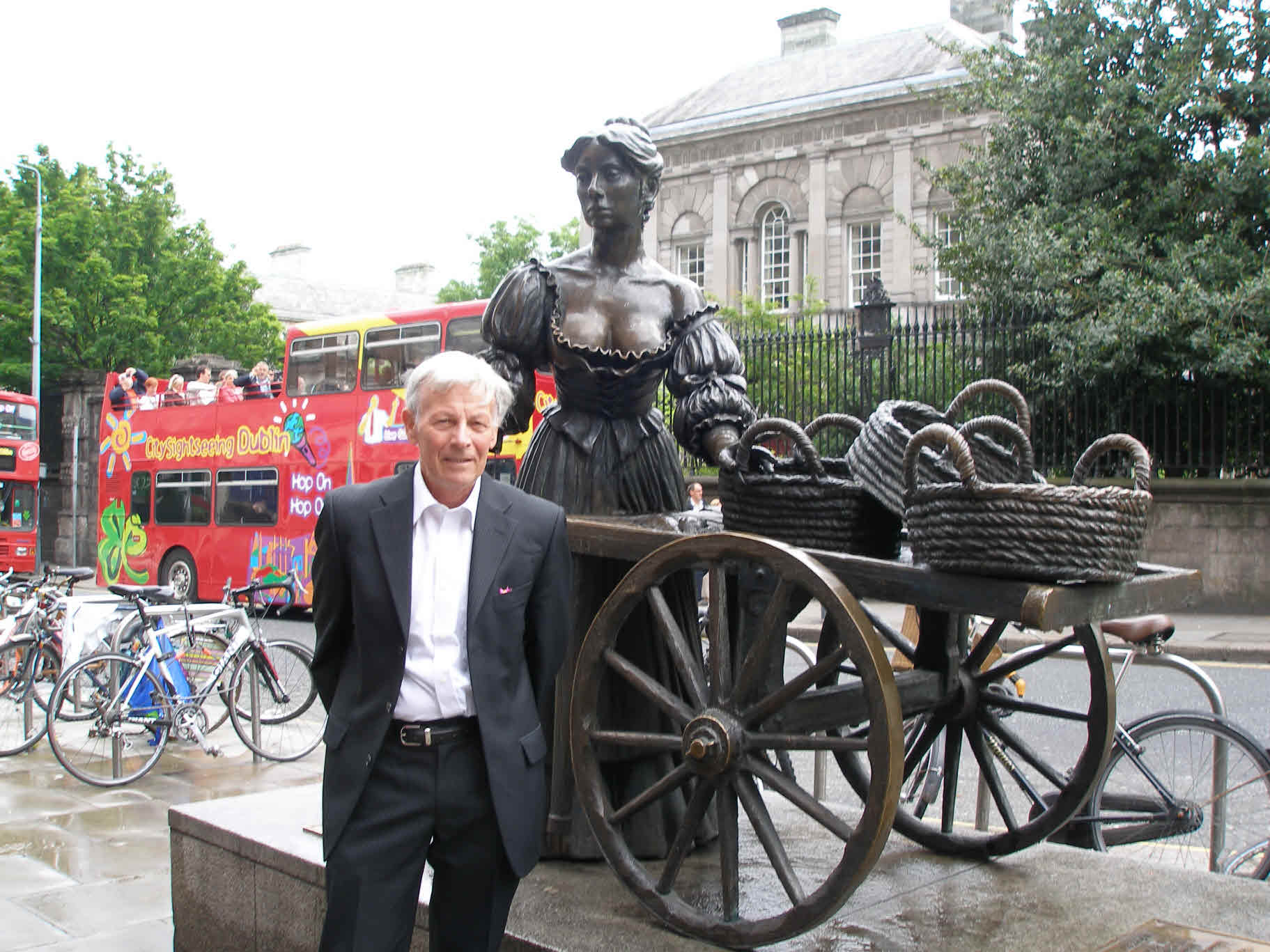
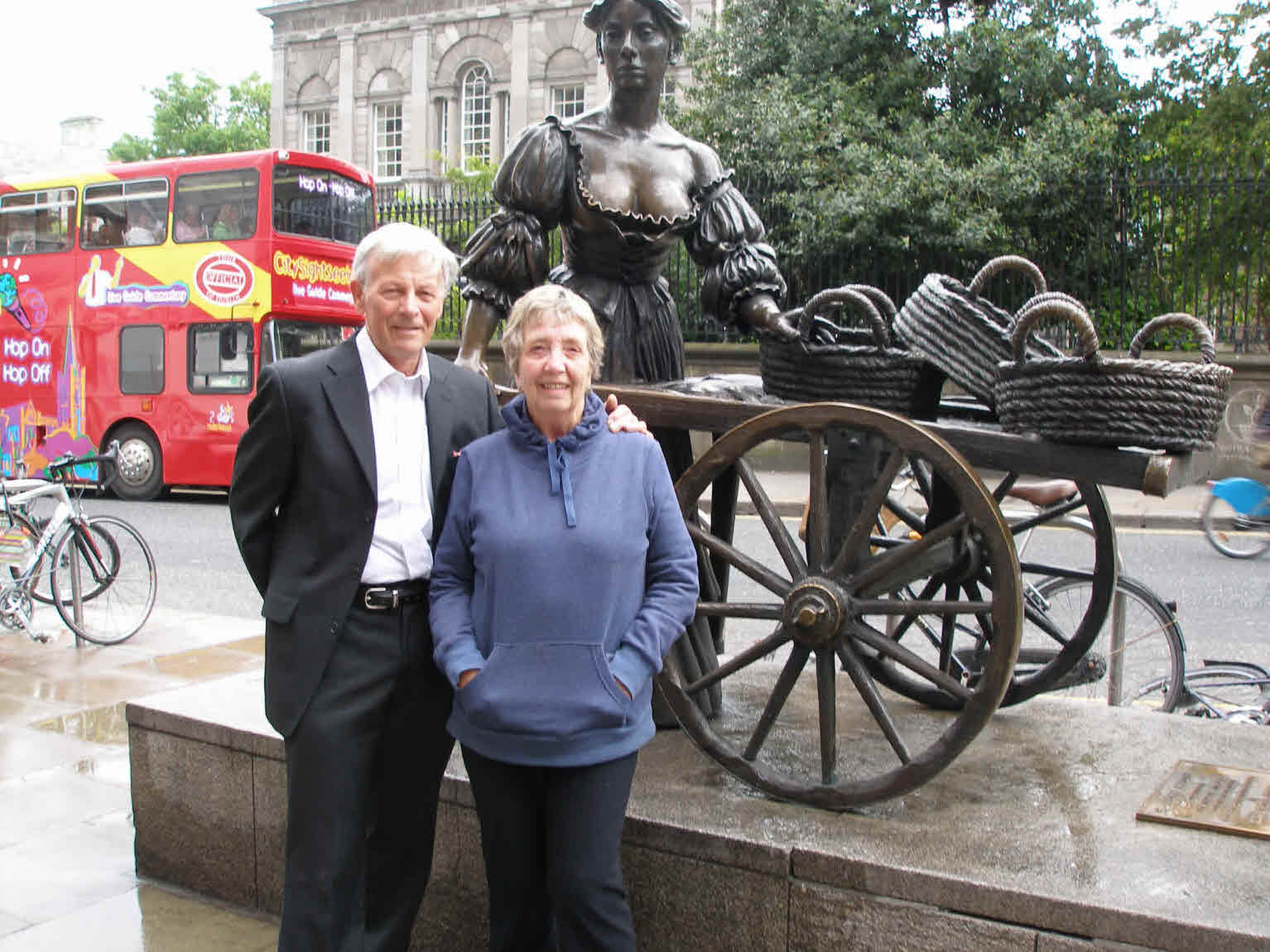
Yes, it's Molly Malone
The song tells the fictional tale of a beautiful fishmonger who plied her trade on the streets of Dublin, but who died young, of a fever. In the late 20th century a legend grew up that there was a historical Molly, who lived in the 17th century. She is represented typically as a hawker by day and part-time prostitute by night.
Leaving Dublin we continued south towards CASHEL. We passed this landmark:
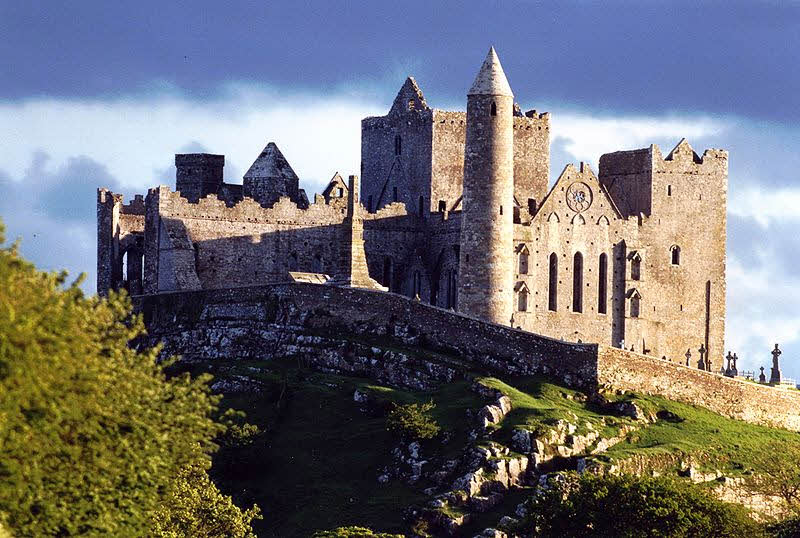
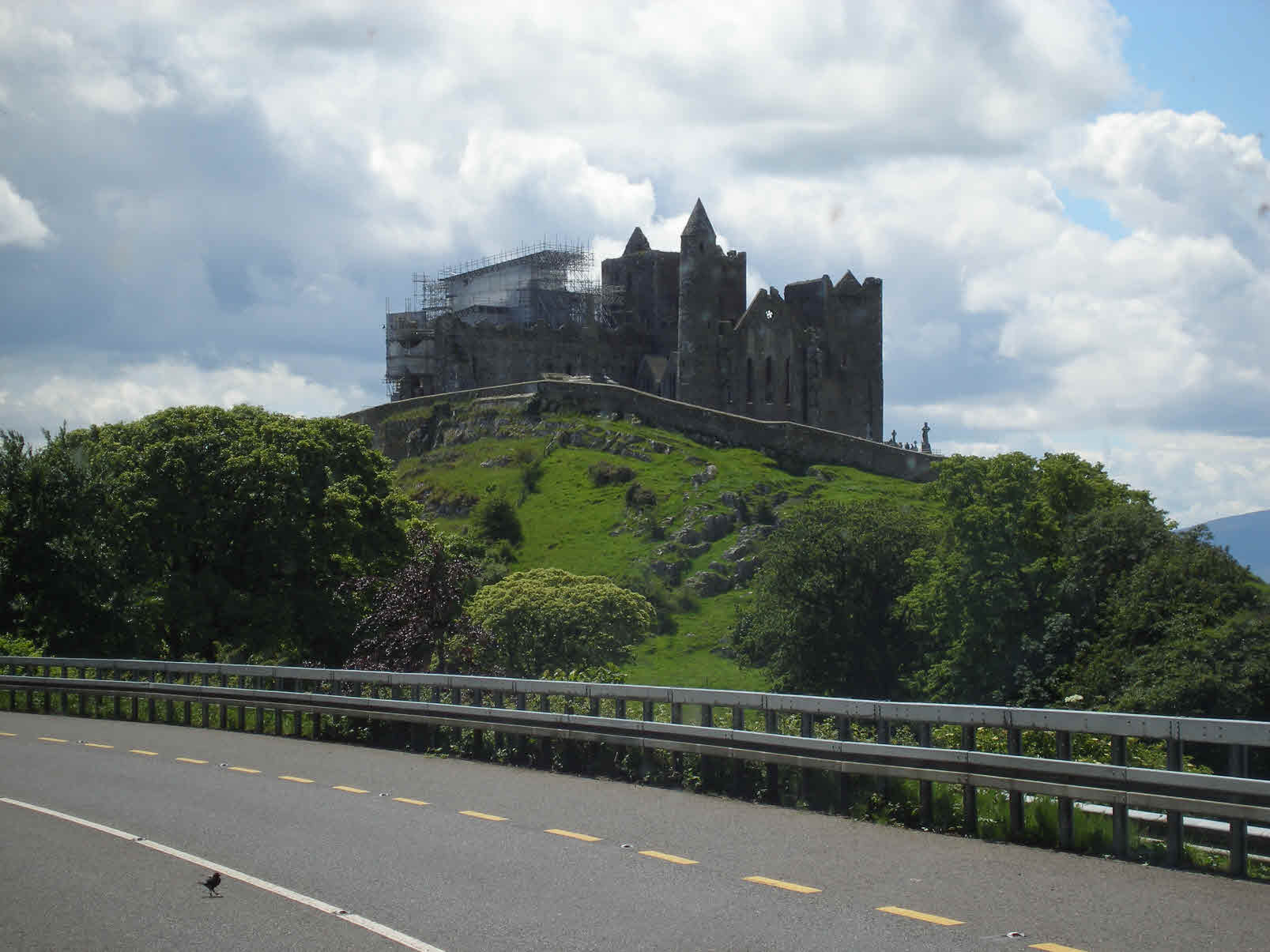
The Rock of Cashel was the traditional seat of the kings of Munster for several hundred years prior to the Norman invasion. It dates back to 1101. Renovation is still ongoing.
After a short stop in Cashel we moved on to our destination, our hotel in Killarney:
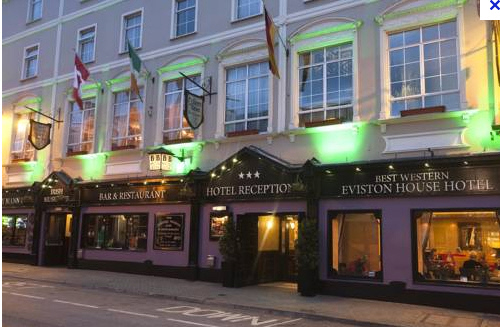
The EVISTON Hotel 3 ***
The town was bigger than we expected and there were loads of shops and eating places.
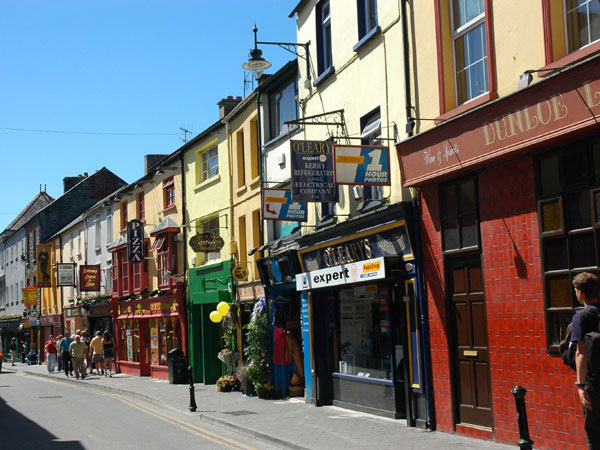
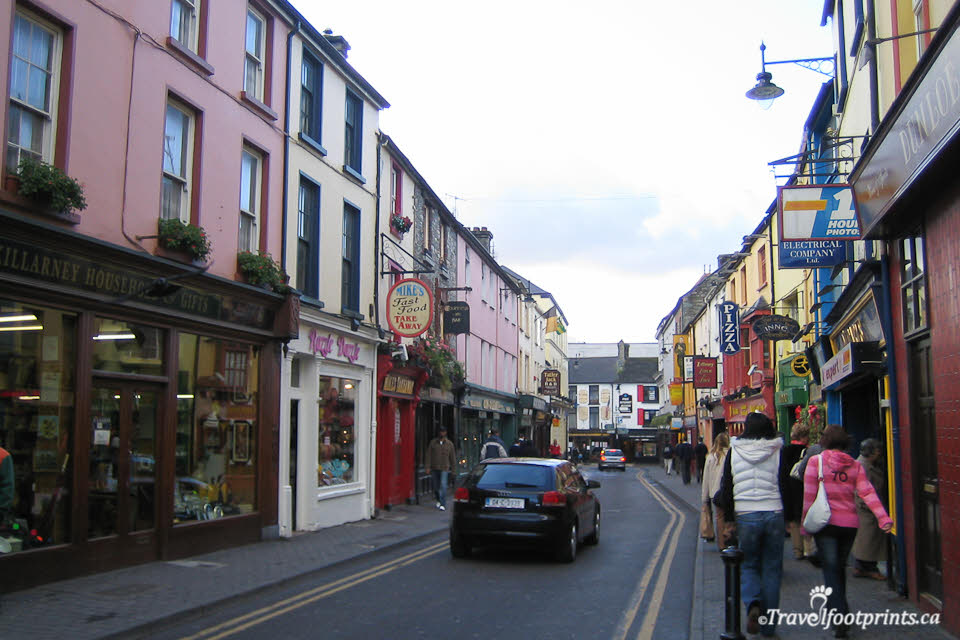
We would spend the next four nights here.
Next day was a free tour by Shearings to take us on what is probably Irelands most scenic route:
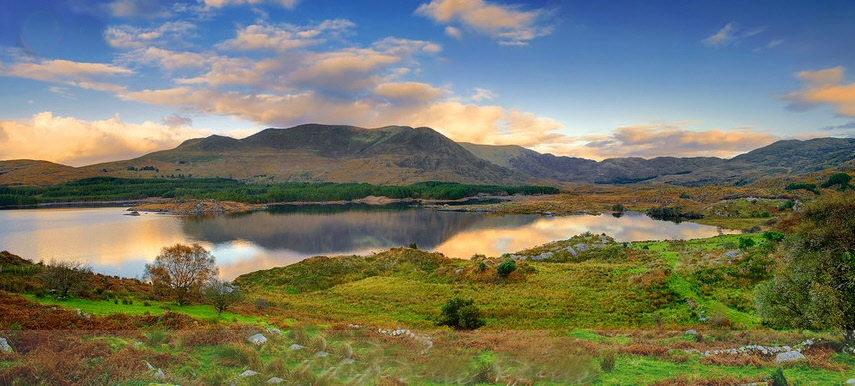
The day began in the worst possible way for the tour. It was cloudy and raining:
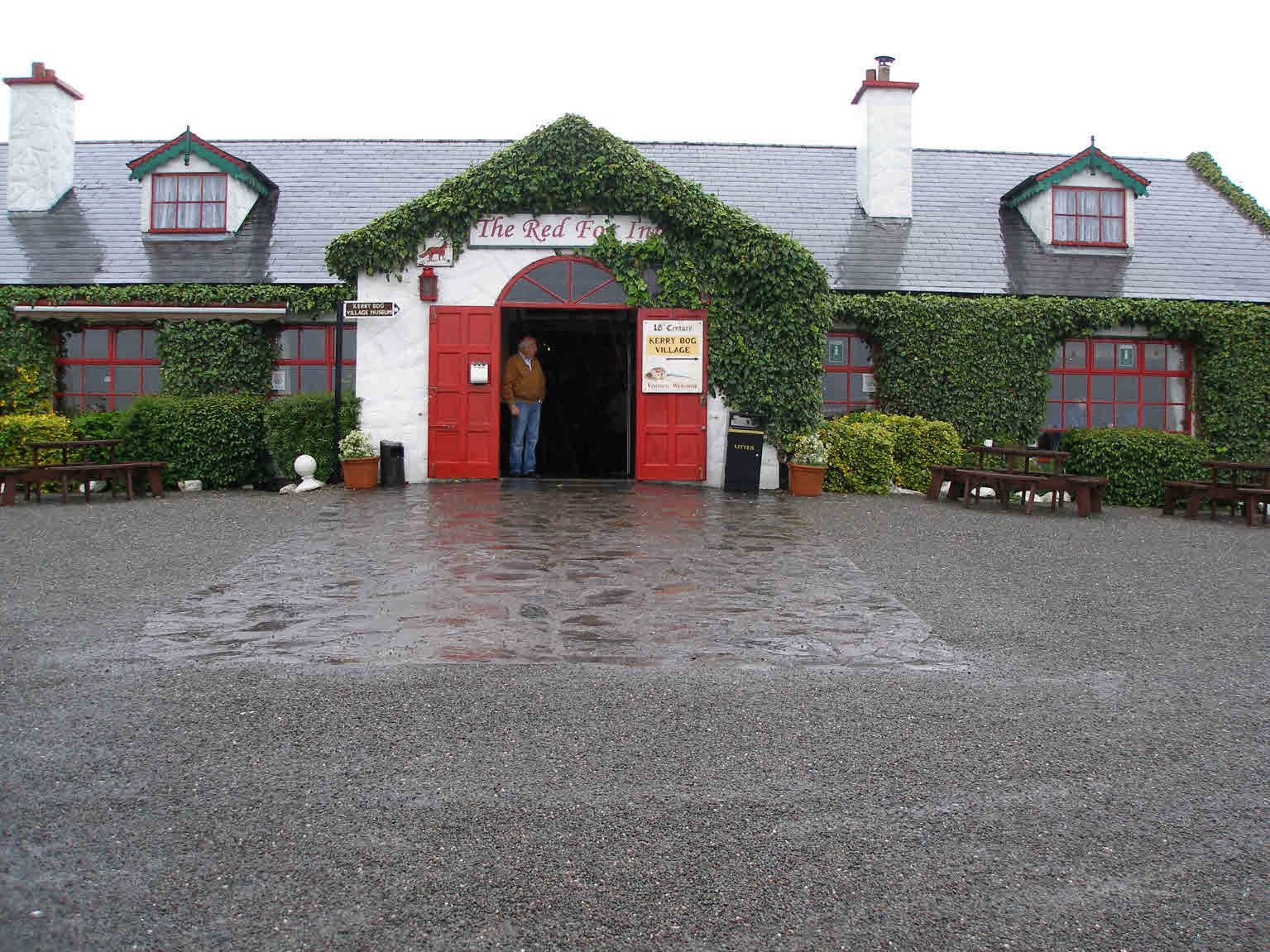
Our first stop was at The Red Fox Inn which served traditional Irish Coffee. The pub was adjacent to this place :
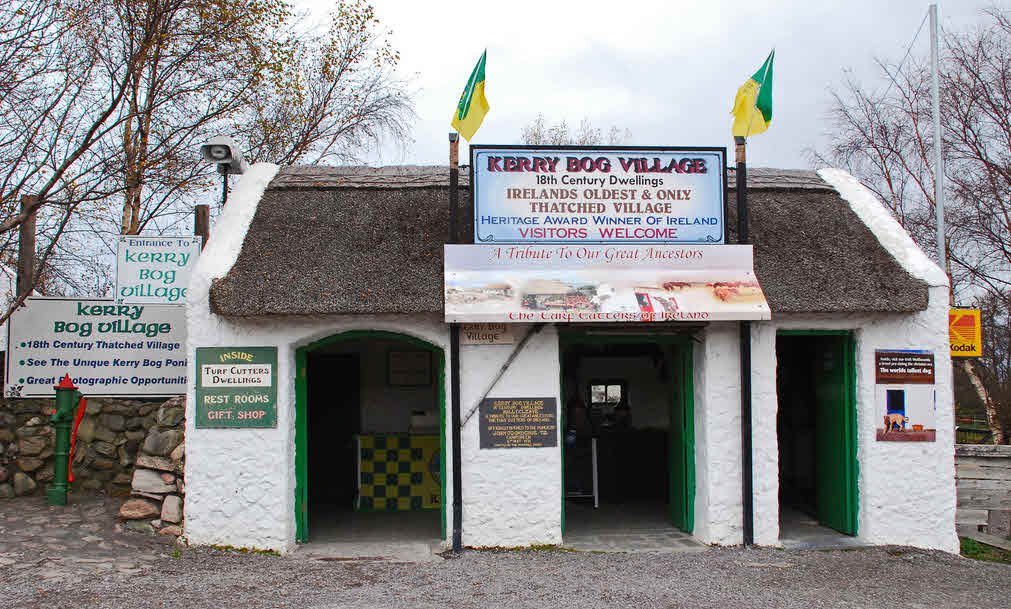
The Kerry Bog Village, located on the beautiful Ring Of Kerry gives you a fascinating insight into how people lived and worked in Ireland in the 18th Century.
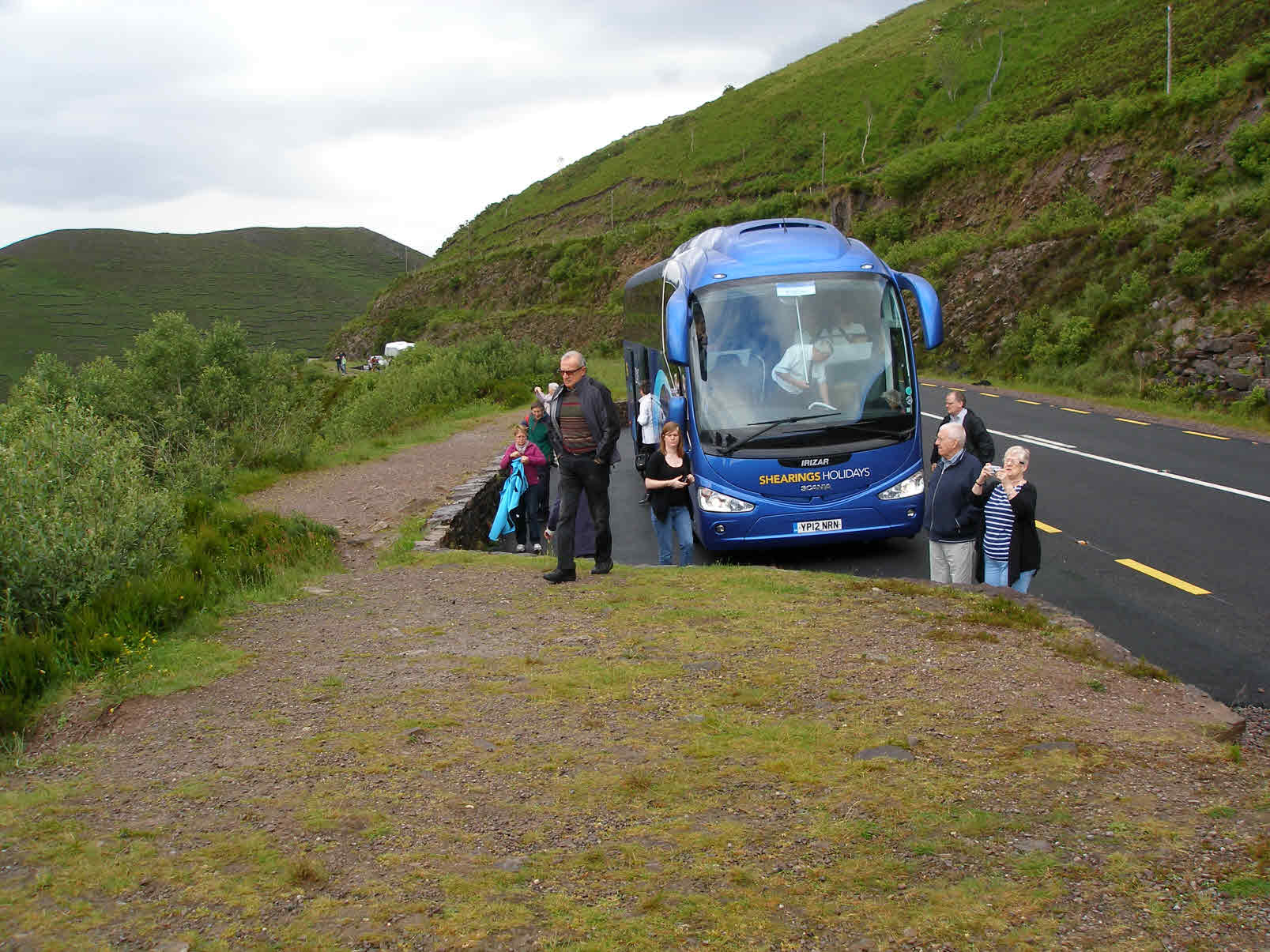
Our driver, David, was also an expert guide and provided us with a continuous wealth of information .
He has worked for Shearings for 20 years and he lives in Torquay.
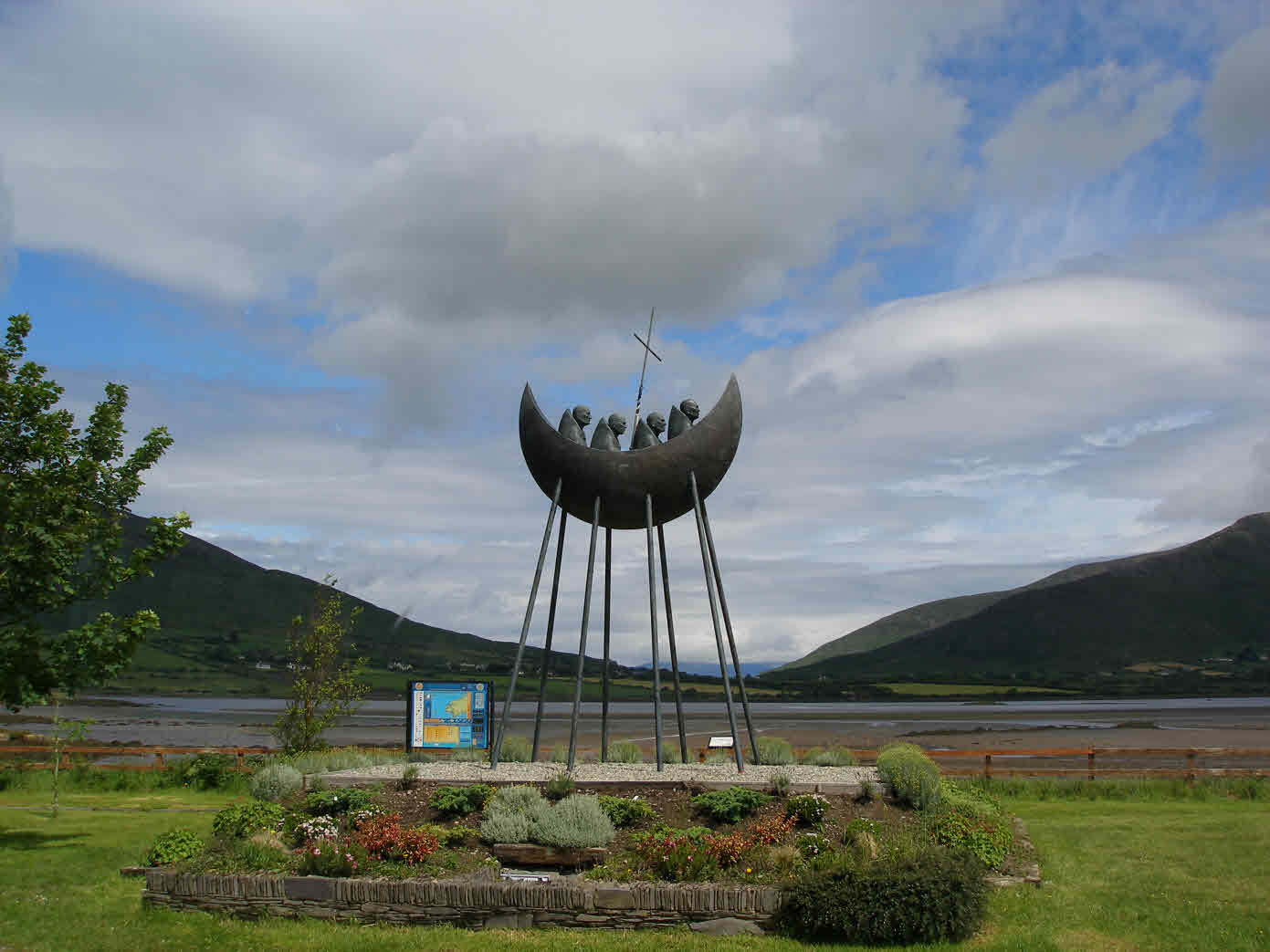
He pointed out a sculpture commemorating the monks who, in the year 588AD, set up a monastery and hermitage on Skellig Mhicheál, a rocky island 12 miles off the coast of Co. Kerry in Ireland.
When we boarded the coach back in Sheffield our nominated
seats were eight rows back and our view of the outside was quite restricted. The
front two seats behind the driver were not allocated and we asked if we could
use them. Our driver said these were prebooked seats at a cost of £10 each
because of their enhanced viewing position. No one had prebooked them so we paid
the upgrade price. A decision that was not regretted, they certainly improved
the enjoyment of our holiday.
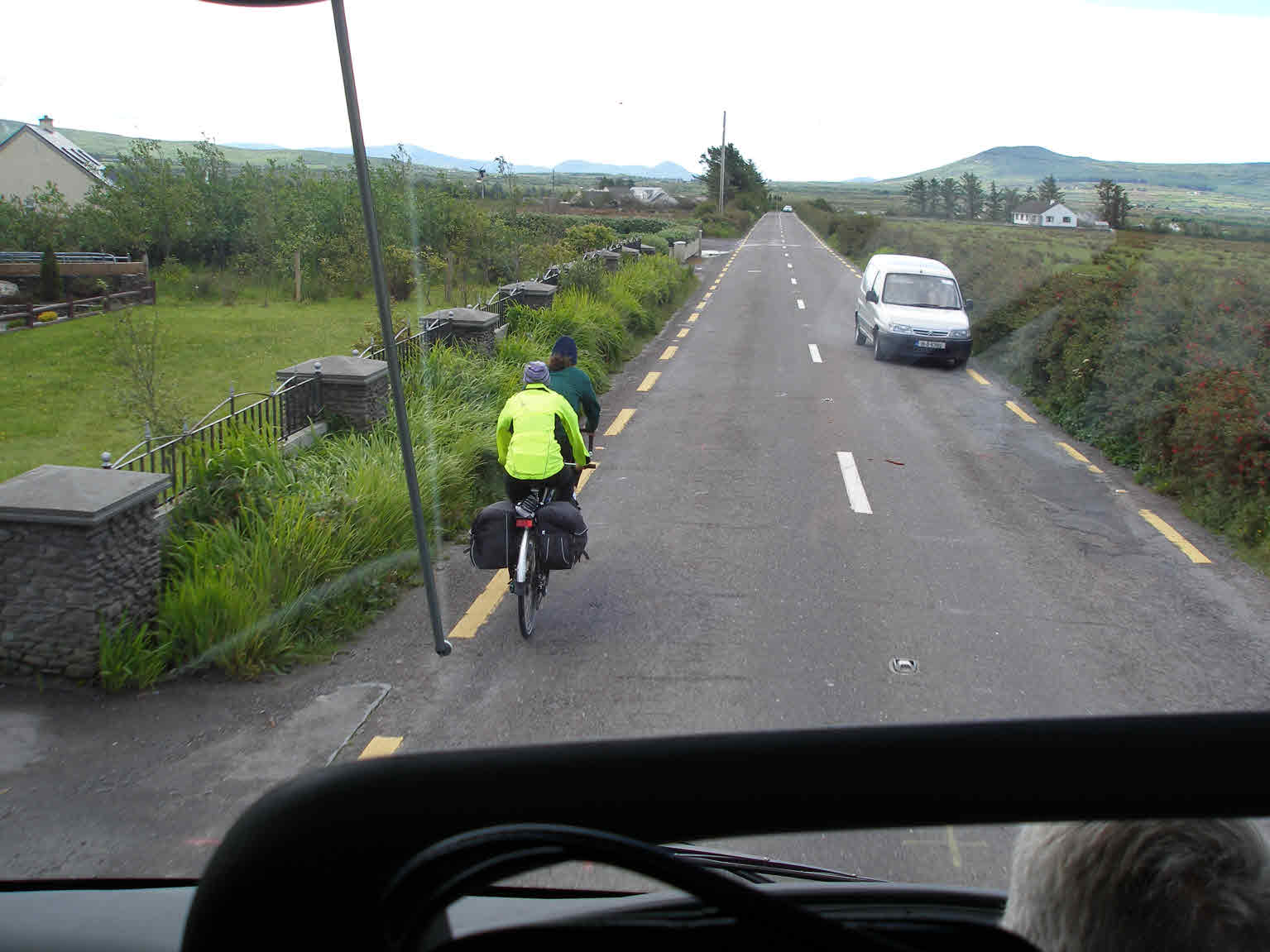
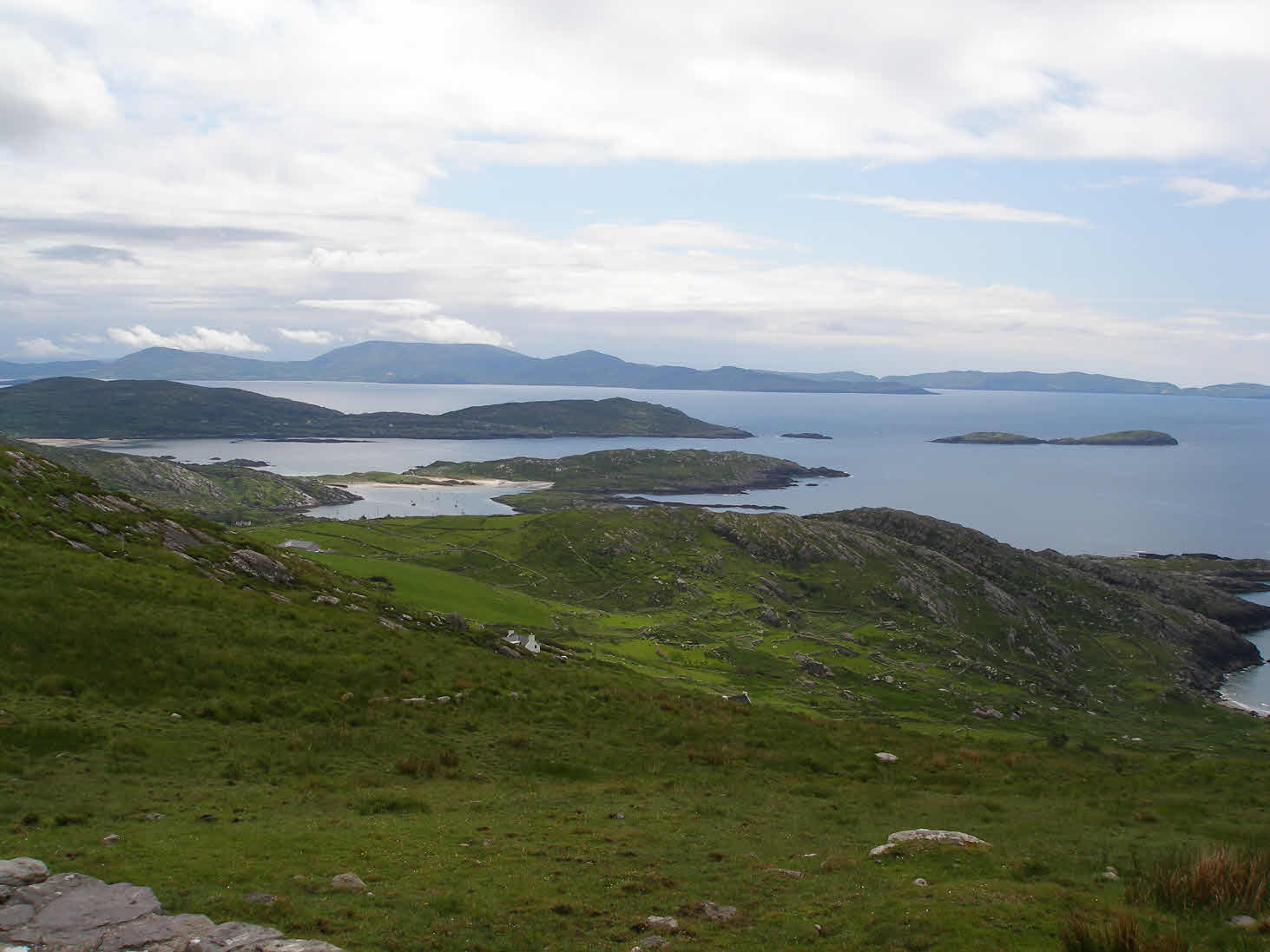
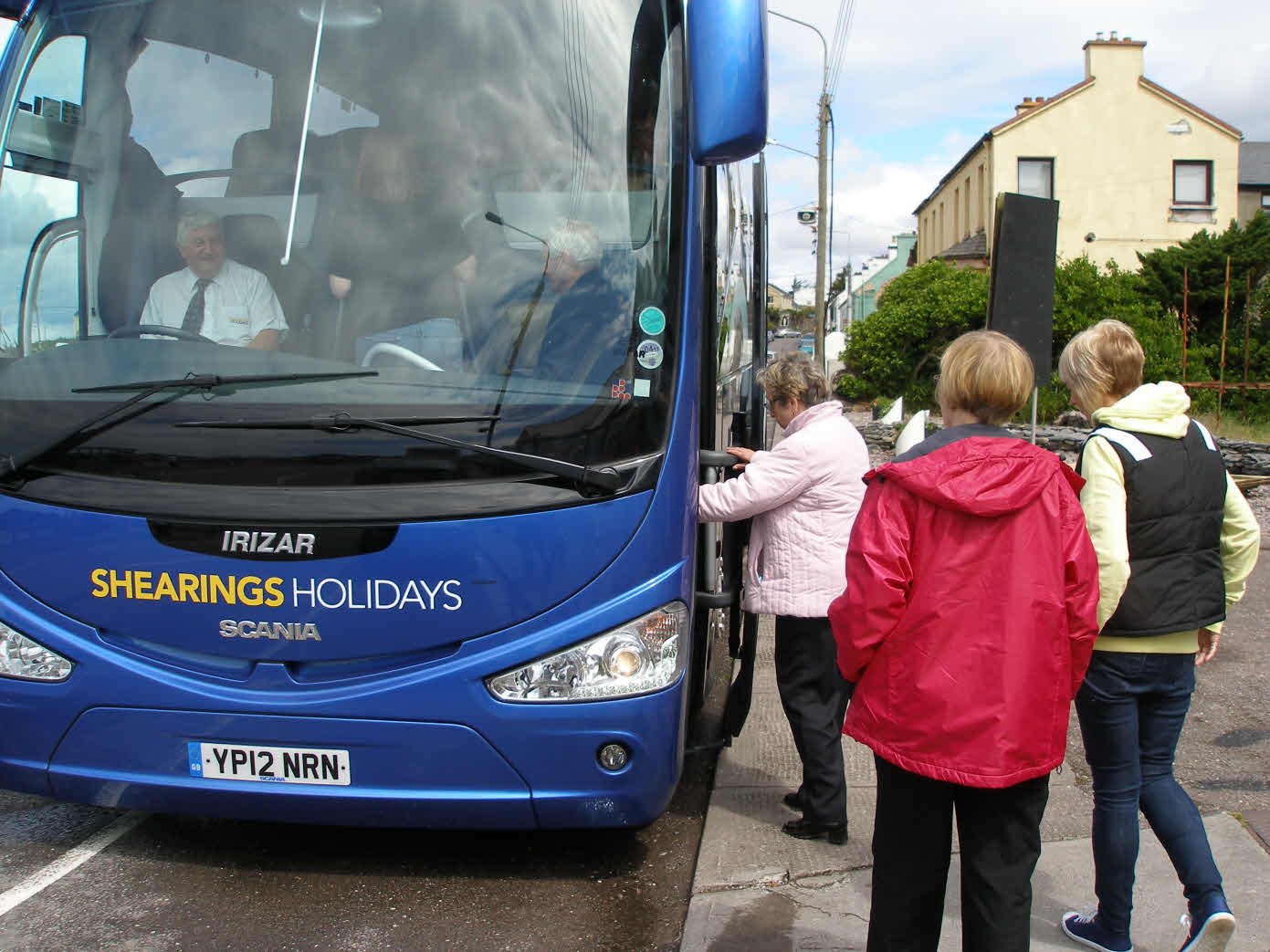
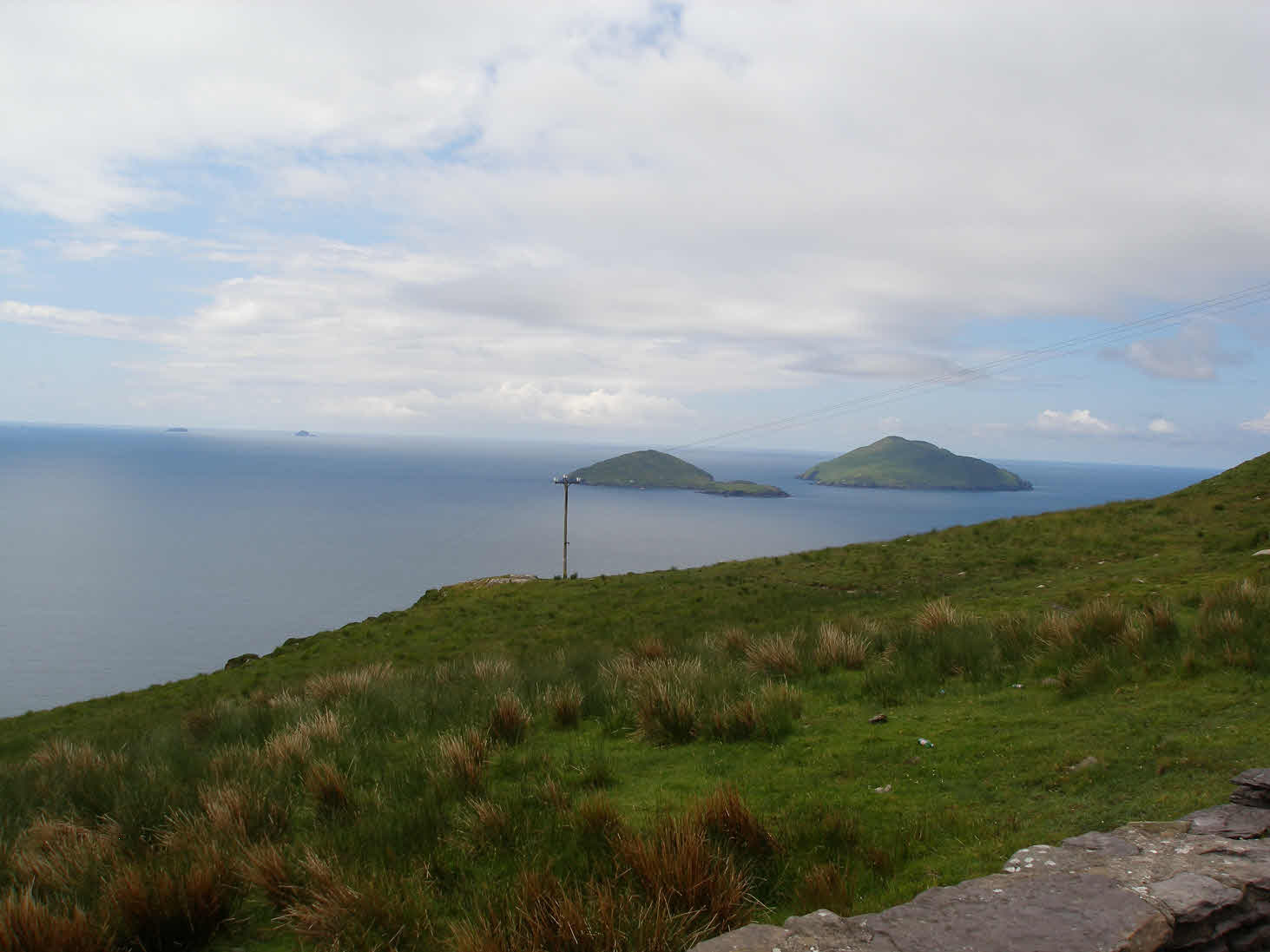
That evening, after dinner, we went into our hotel's bar. Now most people know that Ireland is famous for a particular drink. Something that tastes too bitter for me and I have never liked it. As we were in Ireland I felt I must partake of the traditional drink because many years ago back at Brinsworth Working Men's Club I had discovered how I could enjoy it. I asked the barman for a pint glass with half a Guinness in it. I then requested a half bottle of cider:
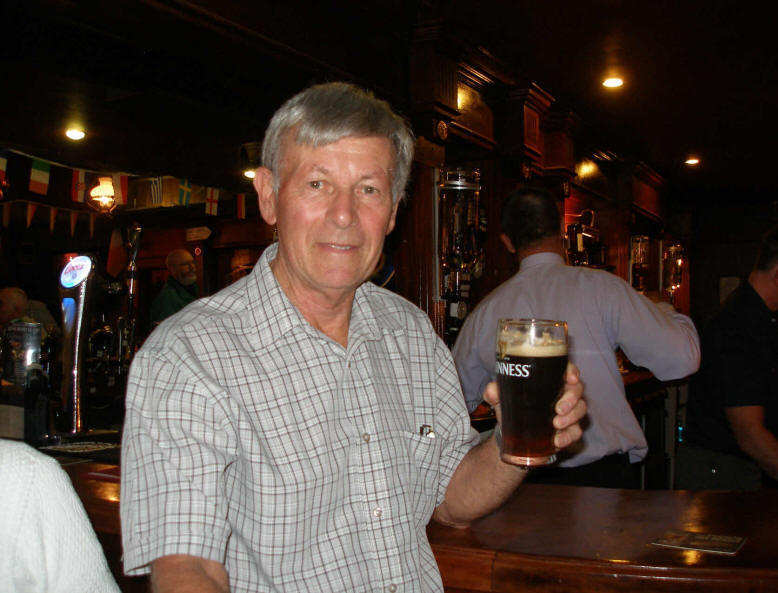
The barman said he had never served Guinness this way and another surprised customer filmed me adding the cider. The concoction is known as a Black Velvet. A true Black Velvet is made with champagne but cider brings the price down to a reasonable level. ( he still charged £5 for it).
Next morning we had a day of leisure in Killarney but there was an optional all day tour available at a cost of £10 each. Our driver had to have two days off to meet regulations so we were taken by a relief driver. Our first stop was just around the corner from our hotel to here :
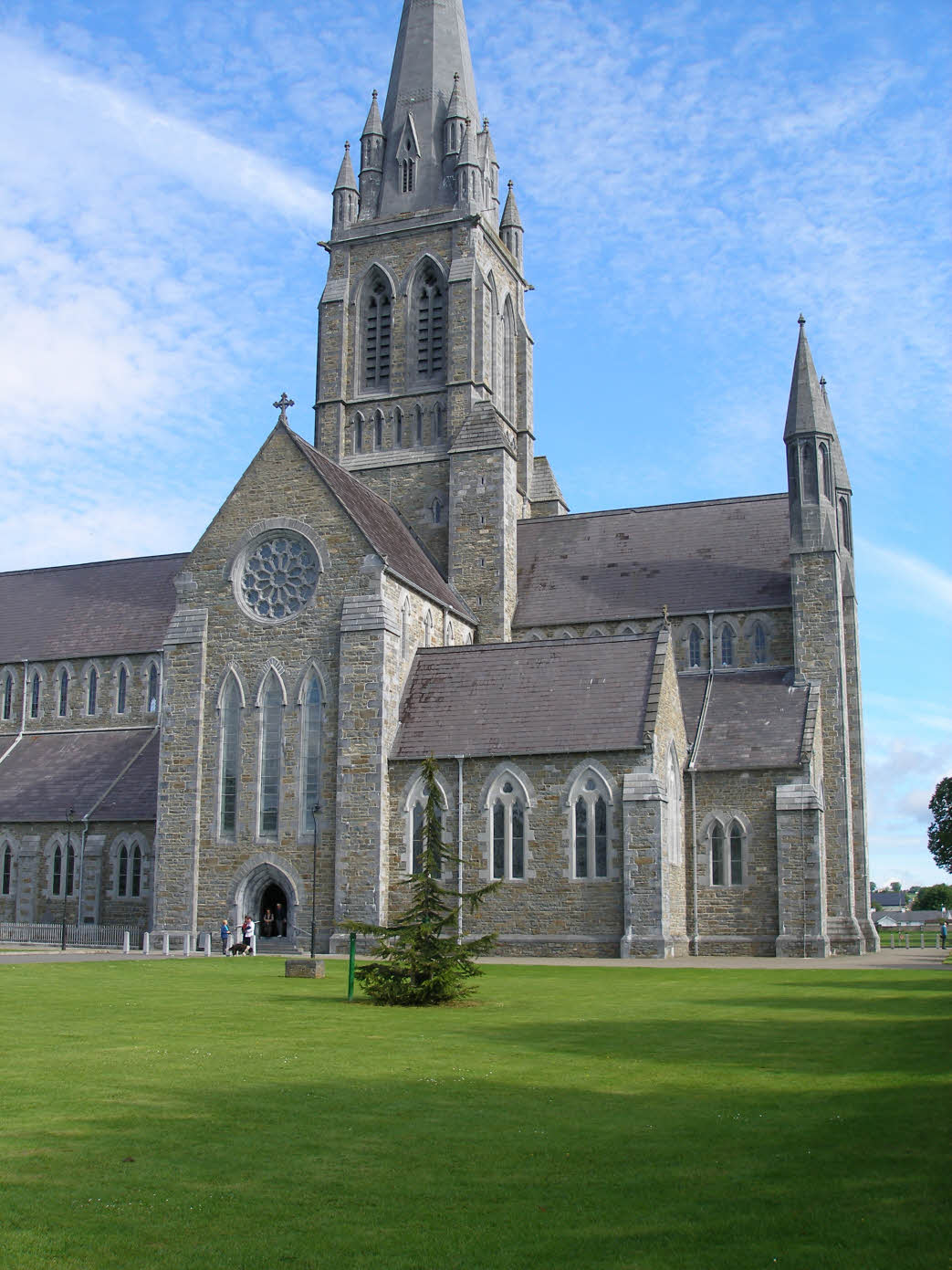
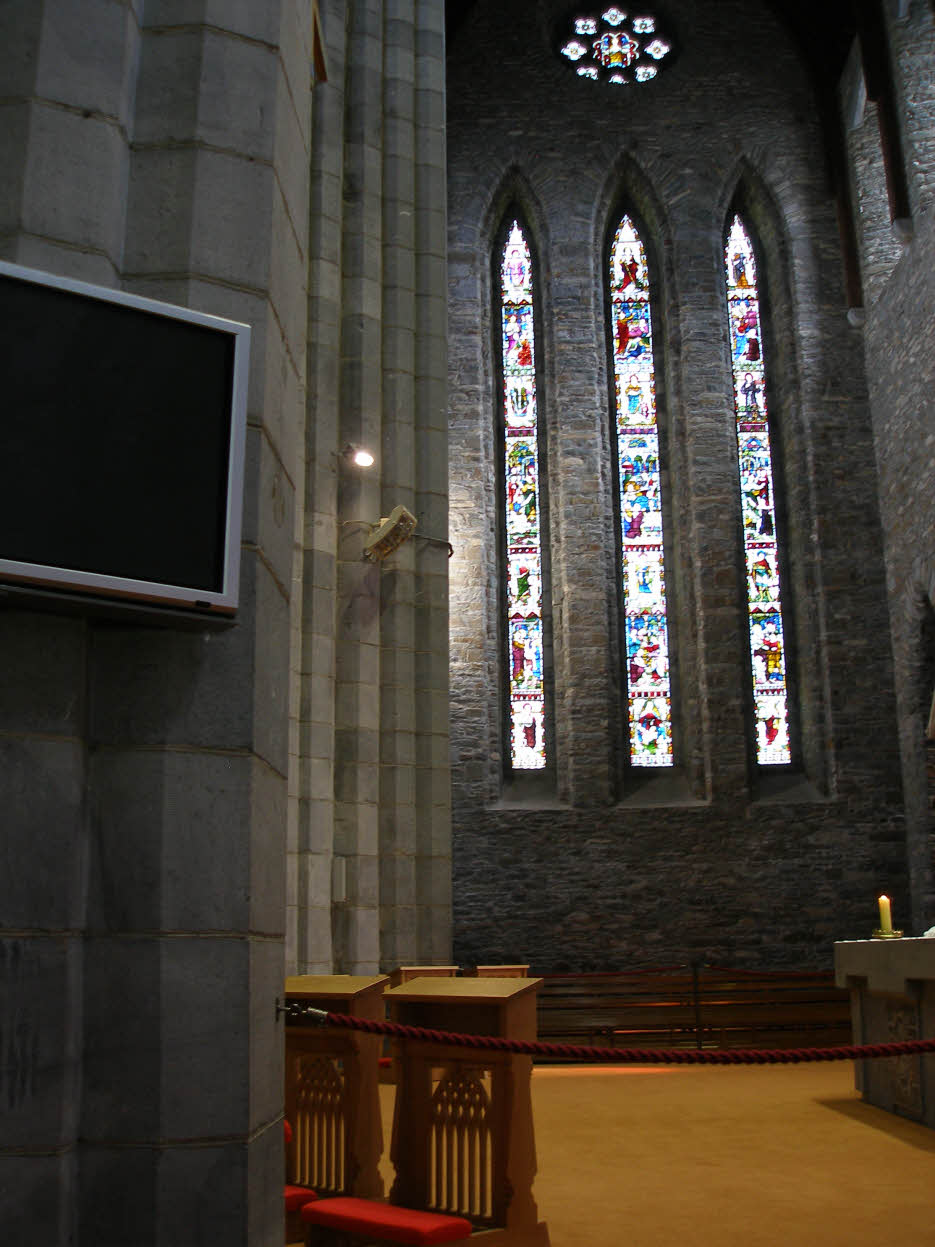
The Saint Mary's Cathedral is a Gothic Revival church in Killarney, Ireland, built between 1842 and 1855 and it is considered the most important and beautiful Neo Gothic church in Ireland.
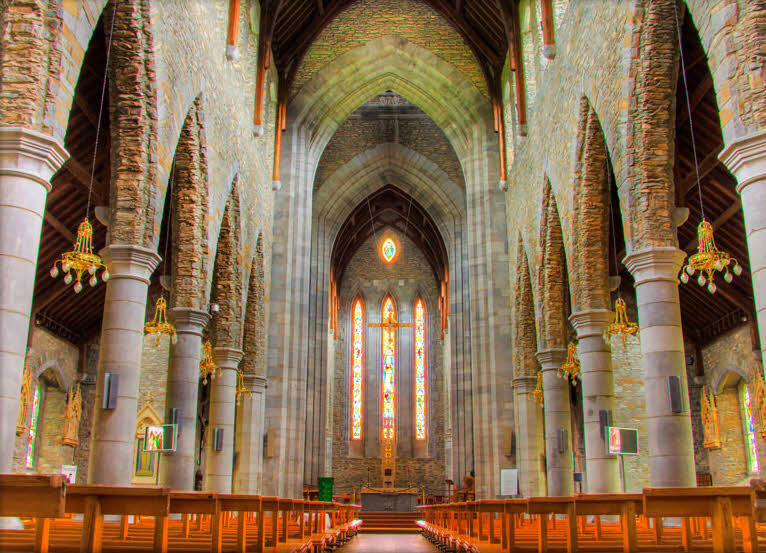
The inside was just as impressive as the outside.
Again we were lucky with the weather. When we were in the hotel or not on a tour there was rain about but today it was fine.
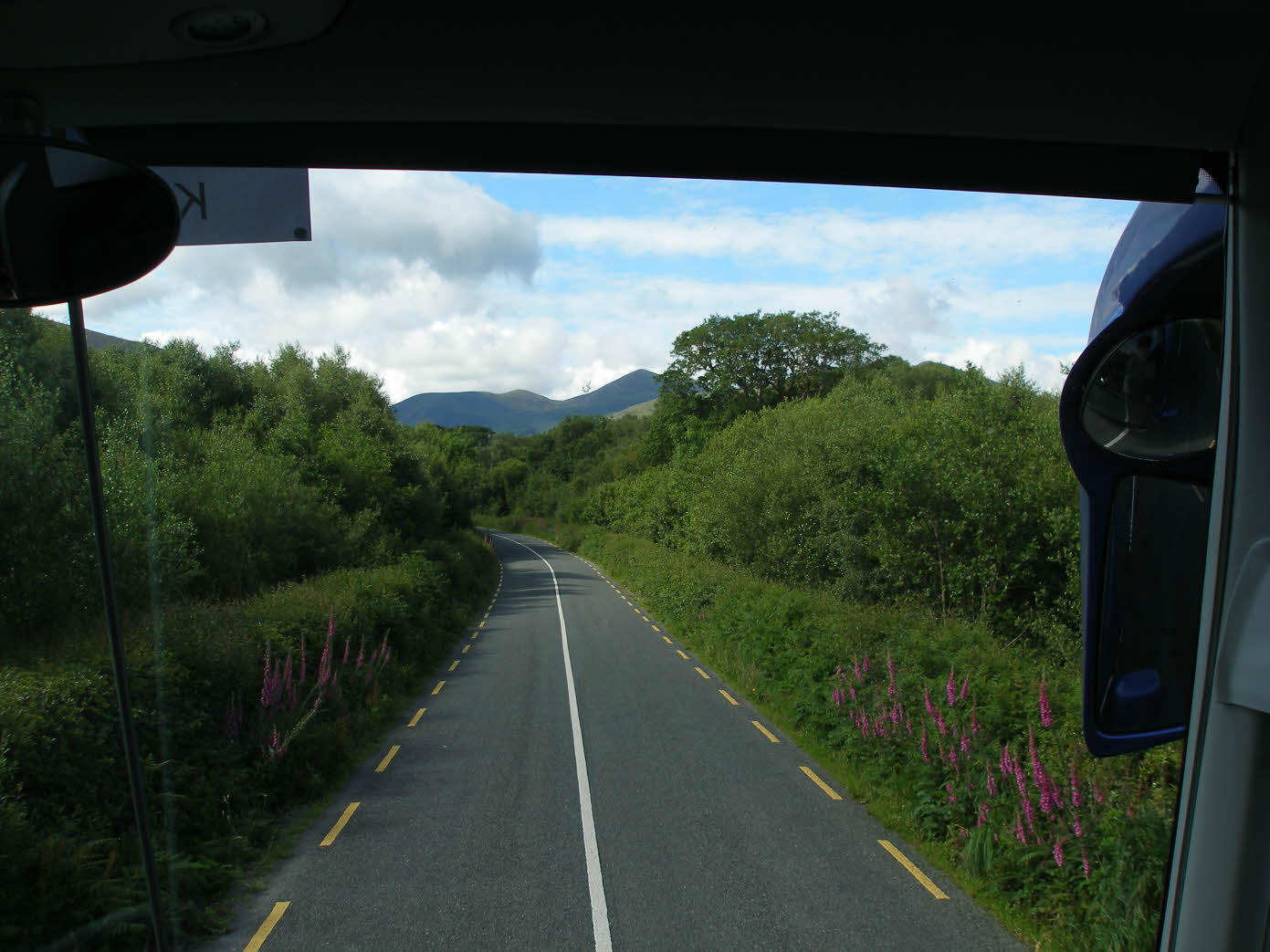
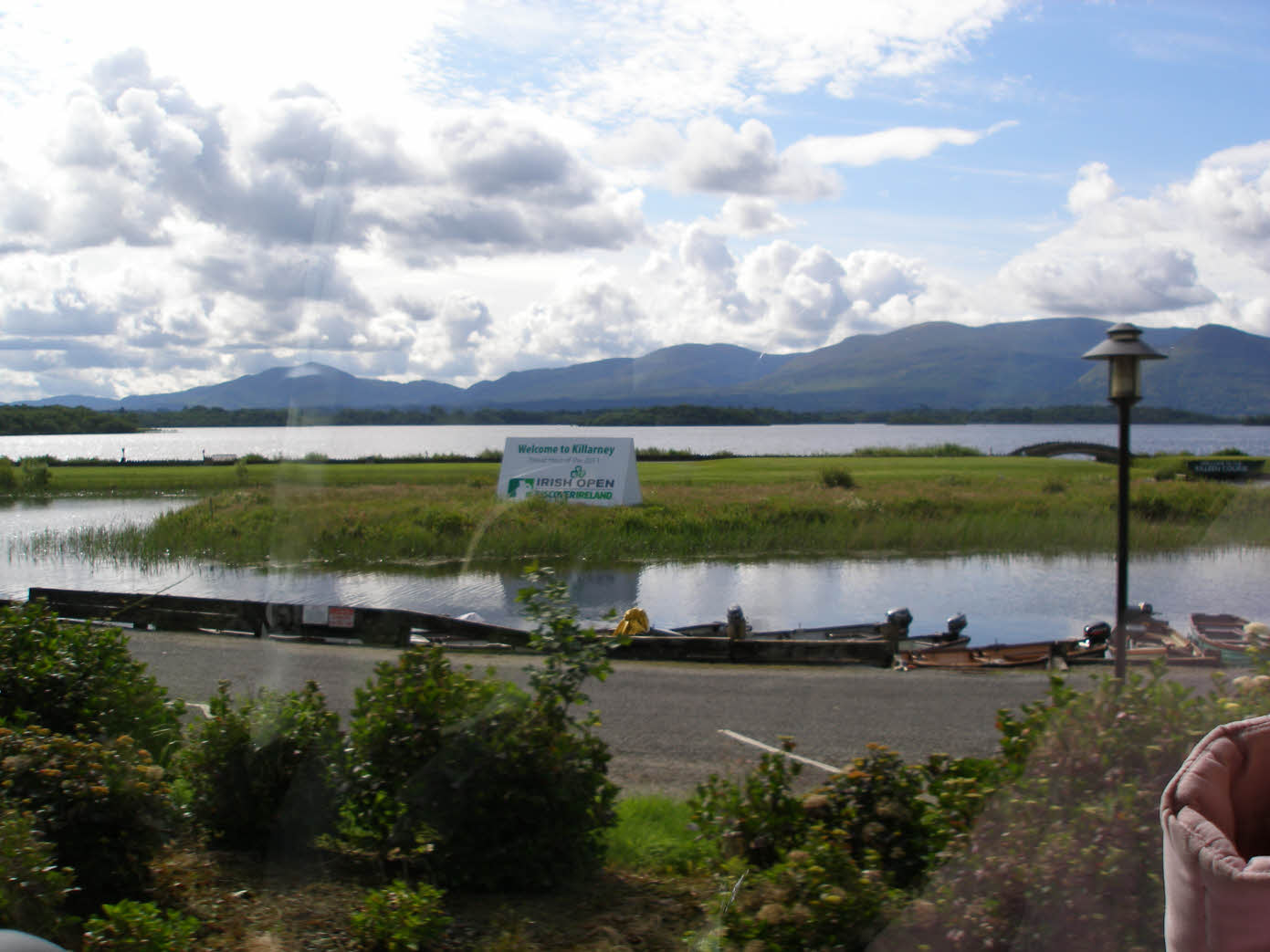
The sign on the right hand photo is advertising the Irish Open Golf Tournament. Ireland is not short of golf courses - we saw dozens of them.
The following day we had another Shearings free tour which comes a close second in scenic beauty to the Ring of Kerry. This is The Dingle Peninsular.
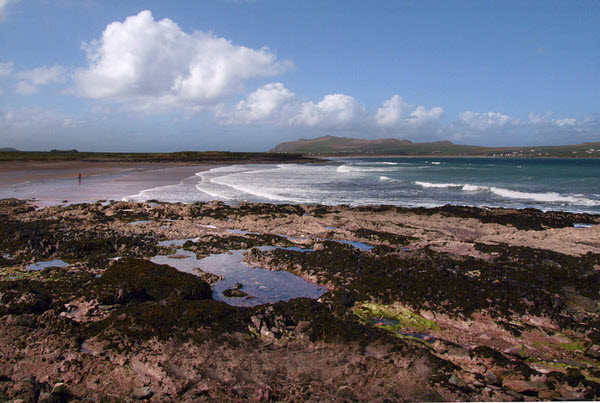
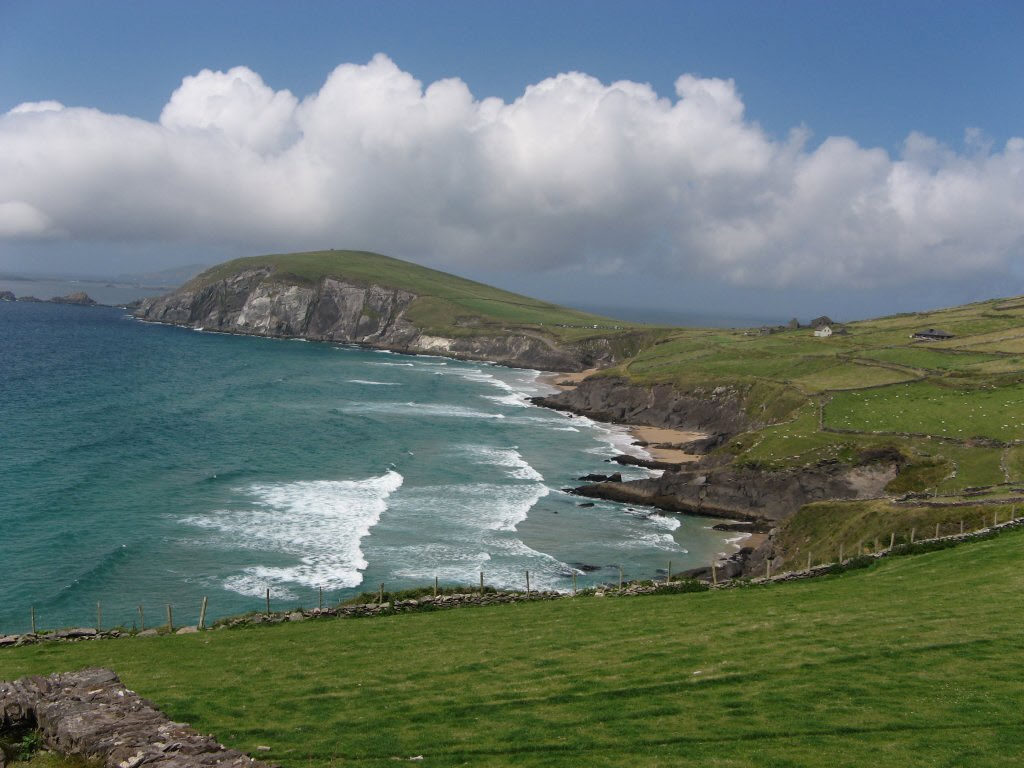
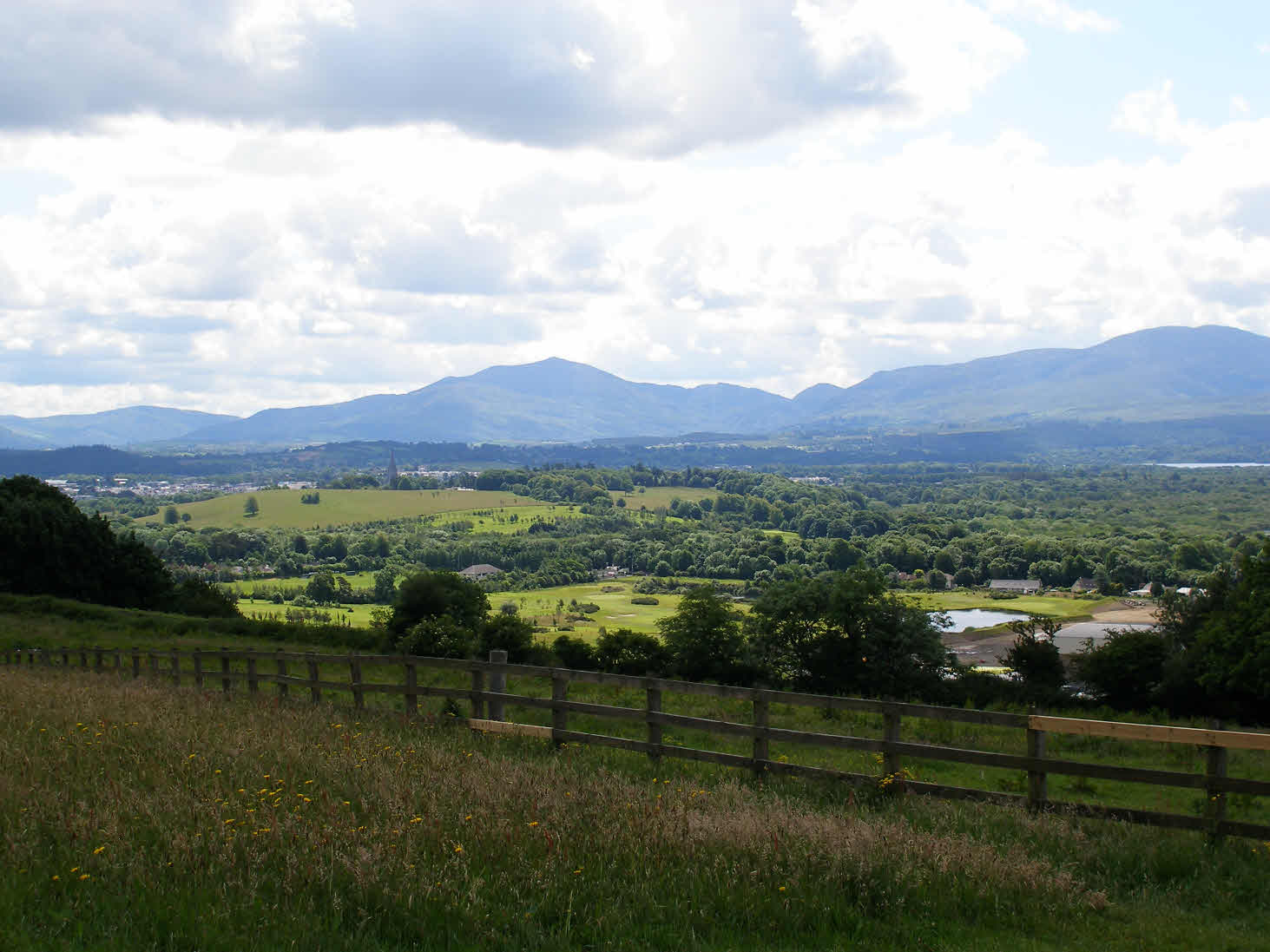
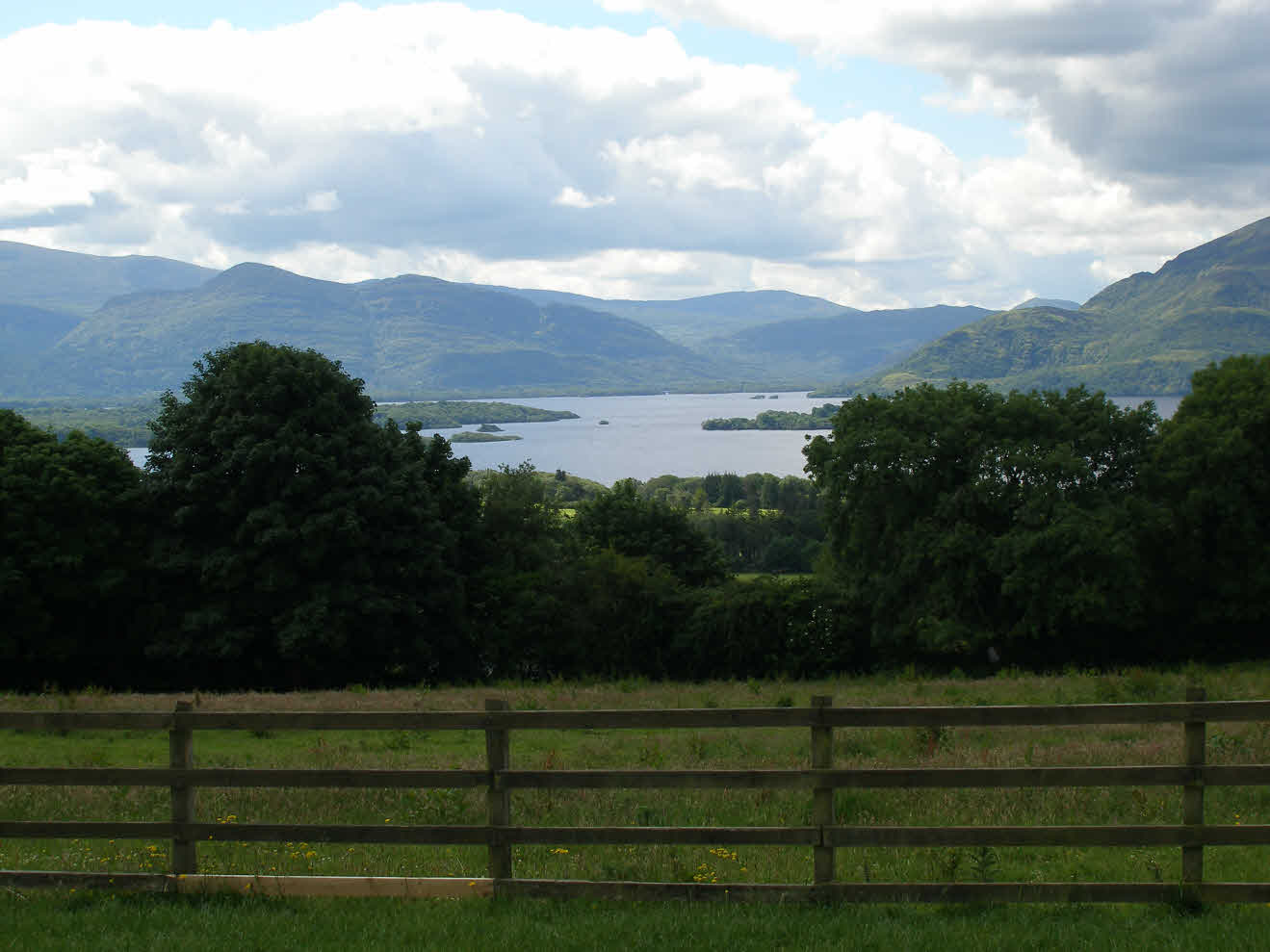
After seeing such wonderful views we were then taken to :
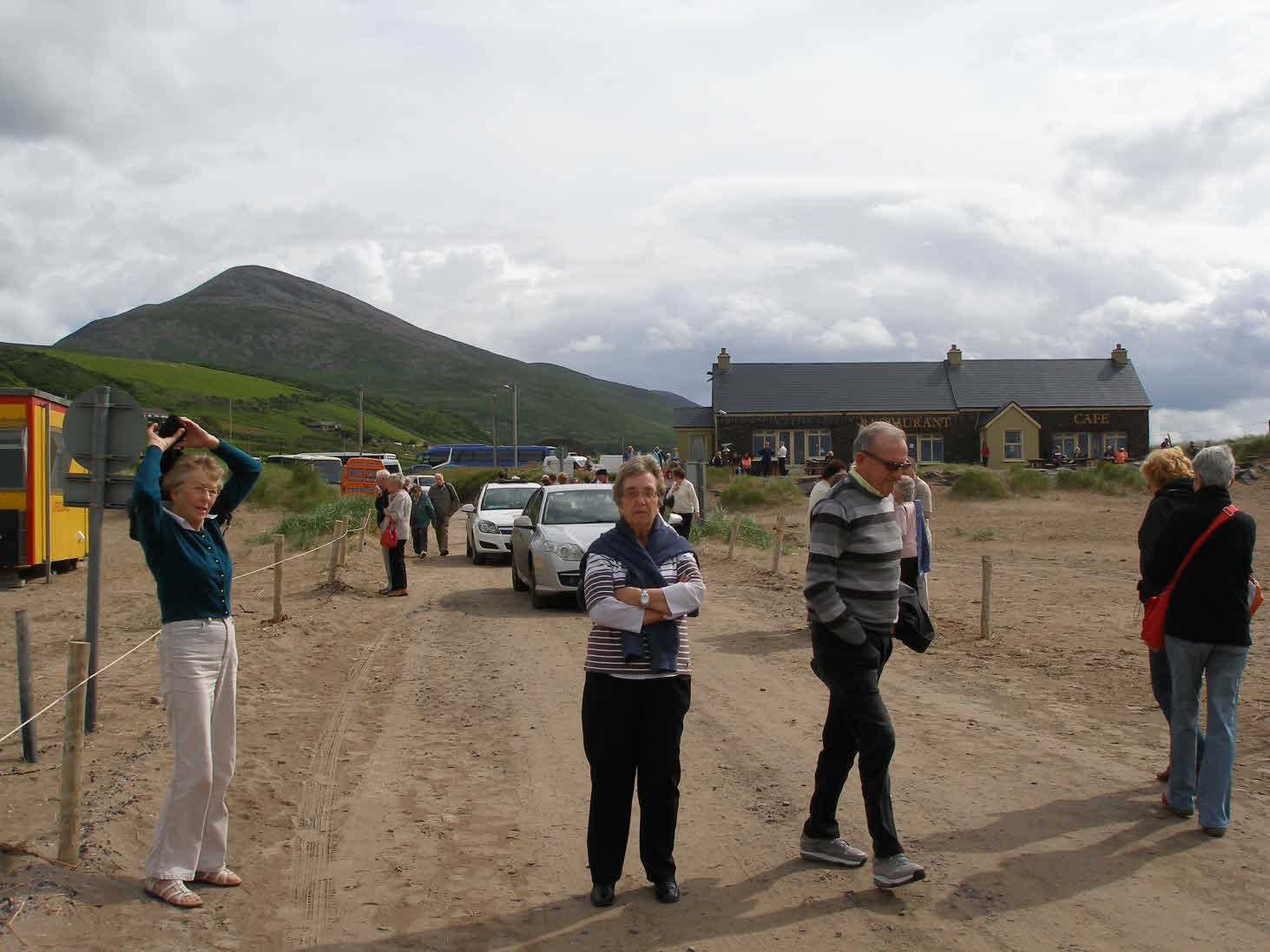
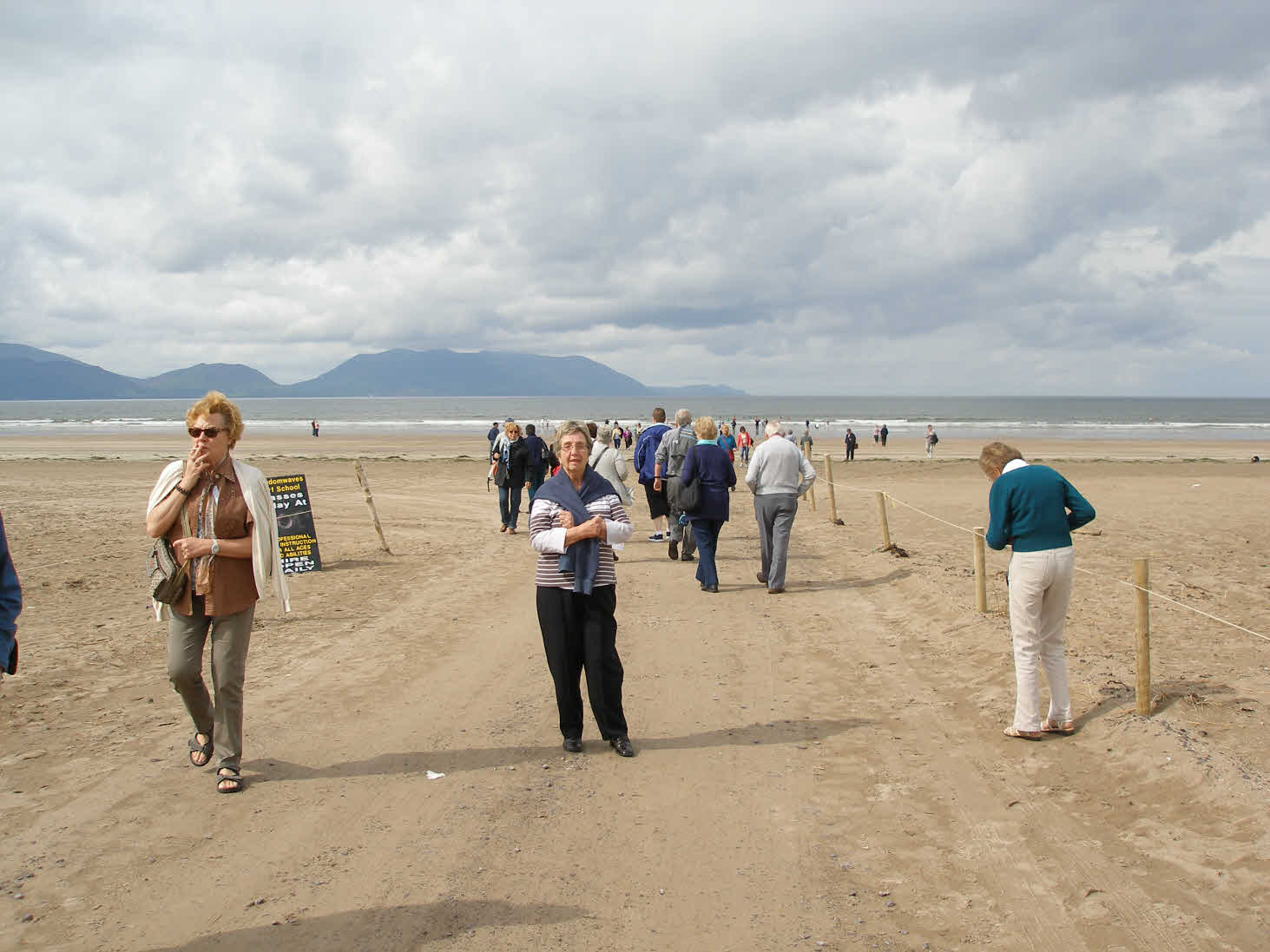
The beach between Slea Head and Dunmore Head on the Dingle Peninsula
I'll now pose the question -What were the names of the two films that used this location in their filming?
One starred John Miles and Robert Mitchum and the other Tom Cruise and Nicole Kidman.
(Answer at the end of this page)
We stopped at the quaint village of SNEEM where we found a couple of points of interest:
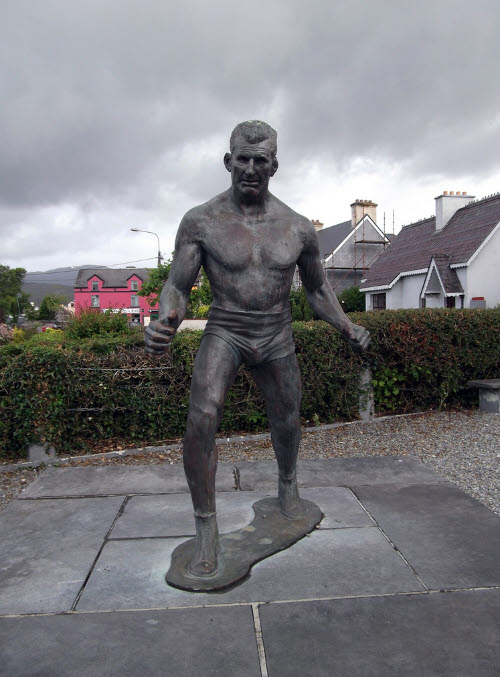
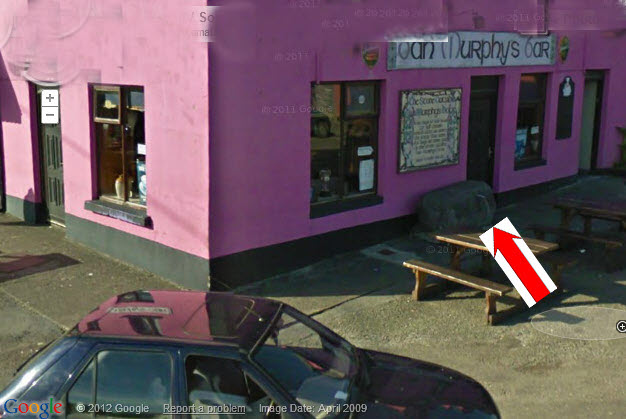
Continuing our drive we saw:
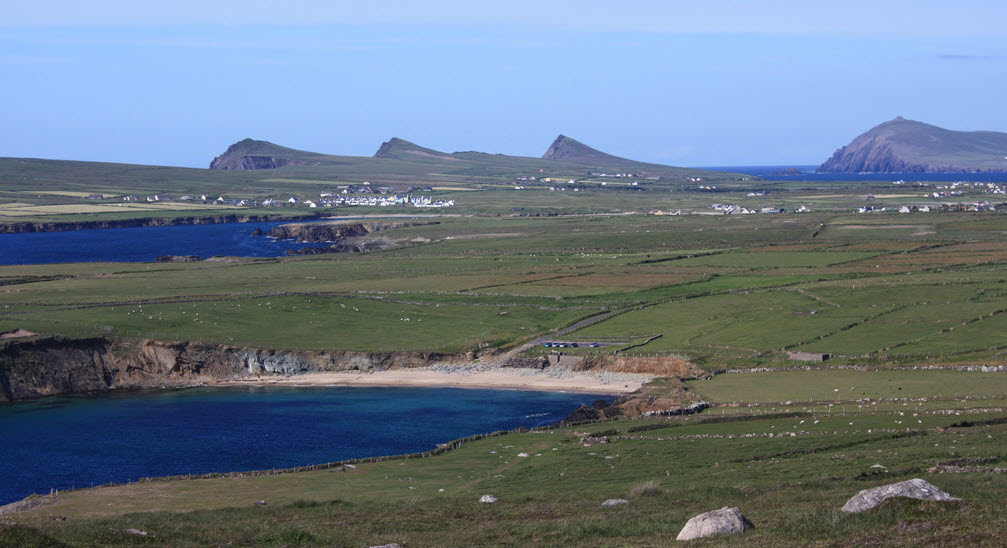
The Three Sisters, ( the three peaks in centre of photo)
The evening was our final day in Killarney before retuning for one more night's stay in Dublin.
The following morning there was an optional chance to tale a Jaunty Ride ( horse and cart followed by a short cruise on a lake).
At 11 am we set off for Dublin passing through the county of Limerick where our son's wife, Anne, has an interest. Her father was born there. I did a little research on the place name and could find no connection to a Limerick poem. (A kind of humorous verse of five lines, in which the first, second, and fifth lines rhyme with each other, and the third and fourth lines, which are shorter, form a rhymed couplet).
We made a brief stop in Waterville, county Kerry to learn of its connection with this fellow :
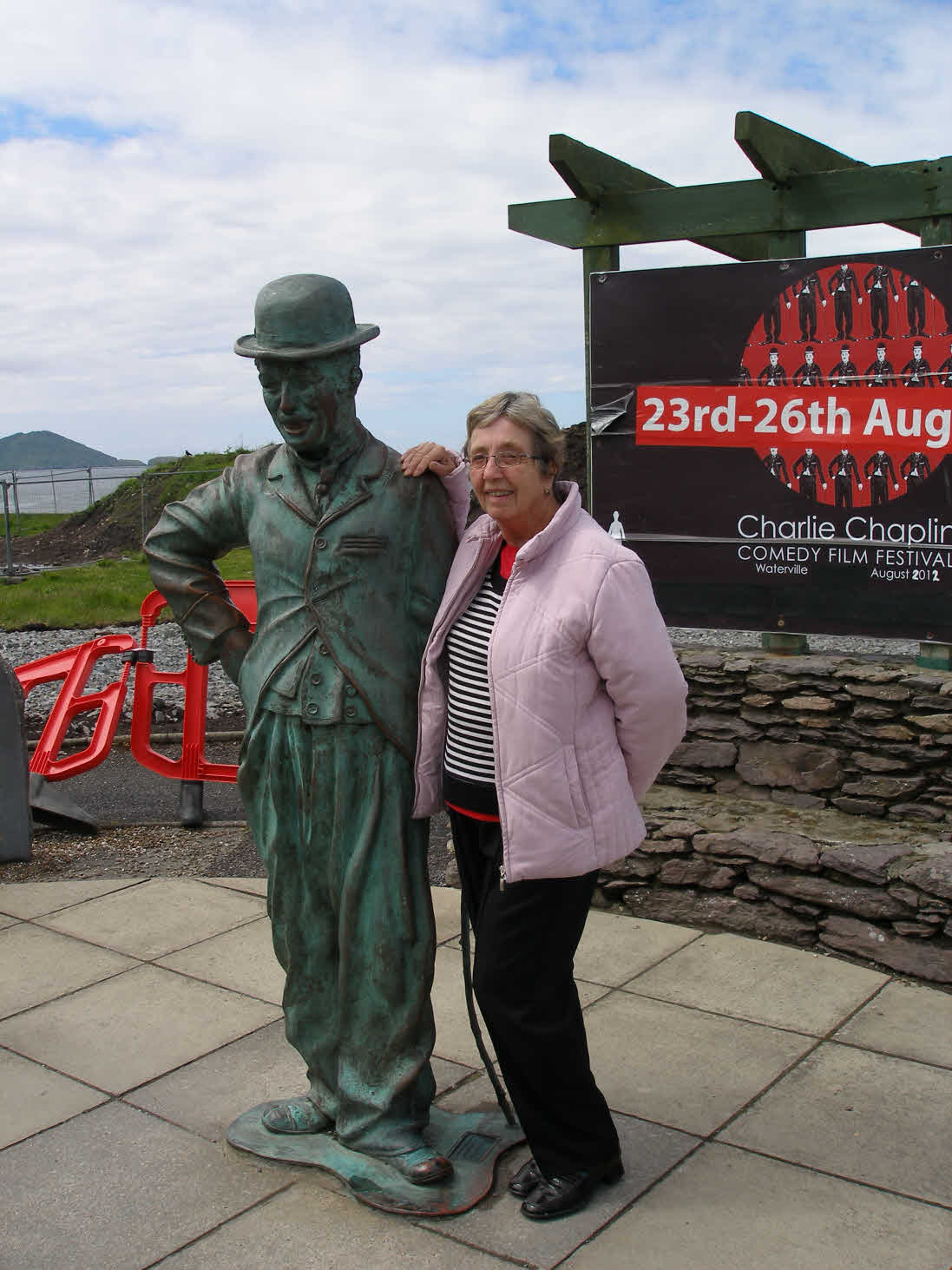
The town was a favourite holiday spot of Charlie Chaplin and his family who used to stay in the Butler Arms Hotel.
On our journey north our driver told us he was going to make a stop at a small place called :
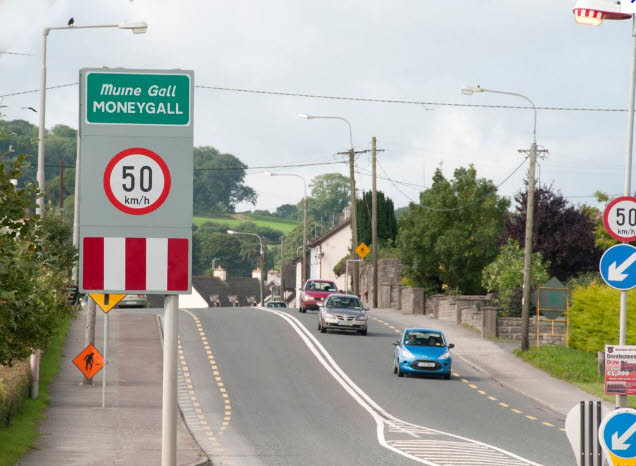
MONEYGALL
A place of absolutely no significance, that is until - On 23 May 2011, Obama and his First Lady visited Moneygall (the birthplace of the president's great-great-great-grandfather), as part of a visit to Ireland. They arrived to a rapturous reception by 5,000 people. The President was greeted upon arrival by his eighth cousin and following a walkabout on the main street where they shook hands with many local residents, the Obamas entered a house that had been built on the site where Falmouth Kearney had lived. Afterwards, they visited Ollie Hayes's pub to meet more of the President's distant relatives and to study the birth records of his ancestors.
President and Mrs. Obama drank Irish Guinness to the traditional toast.
Now tourists flock to the town which flies appropriate flags permanently.
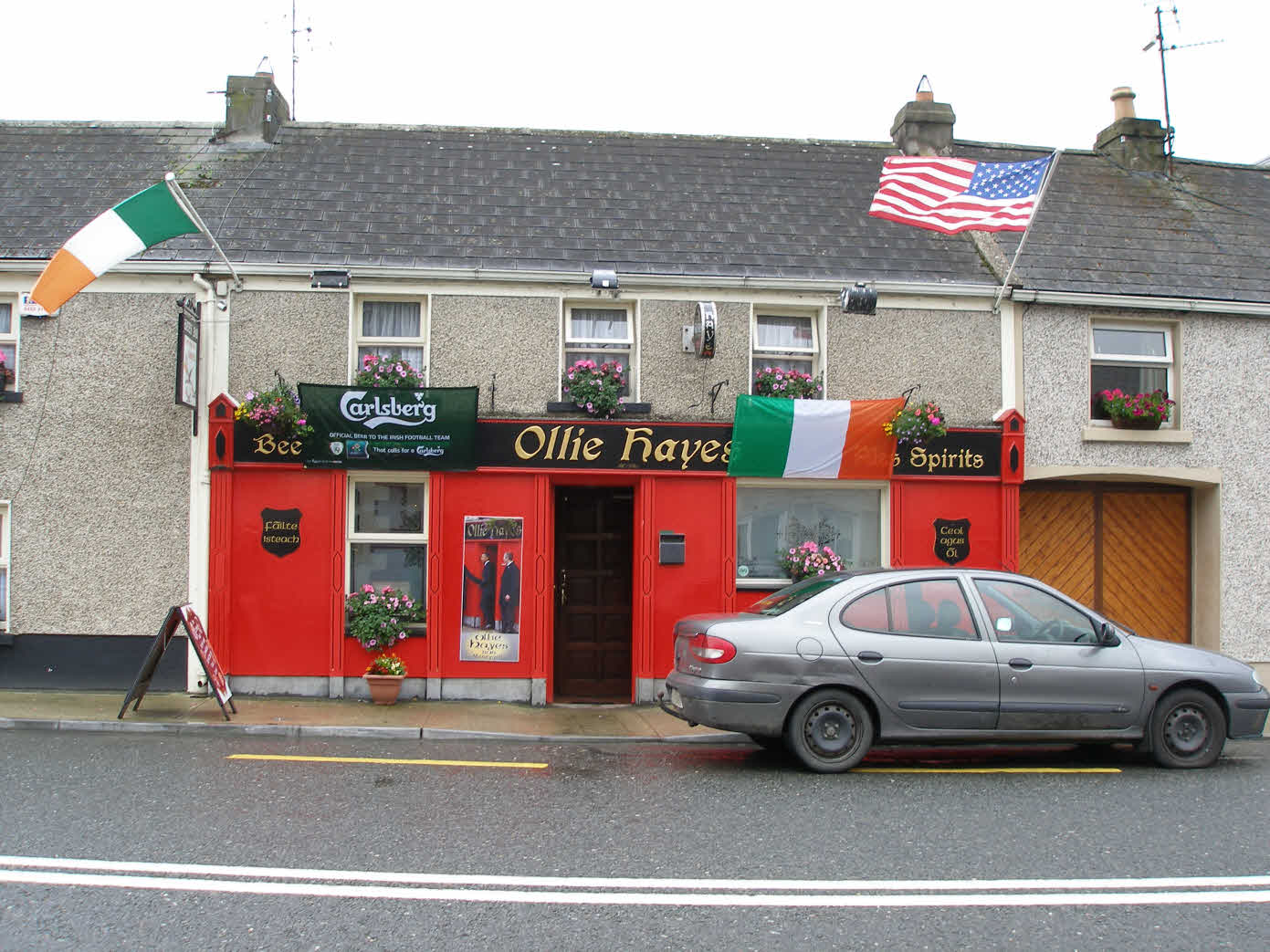
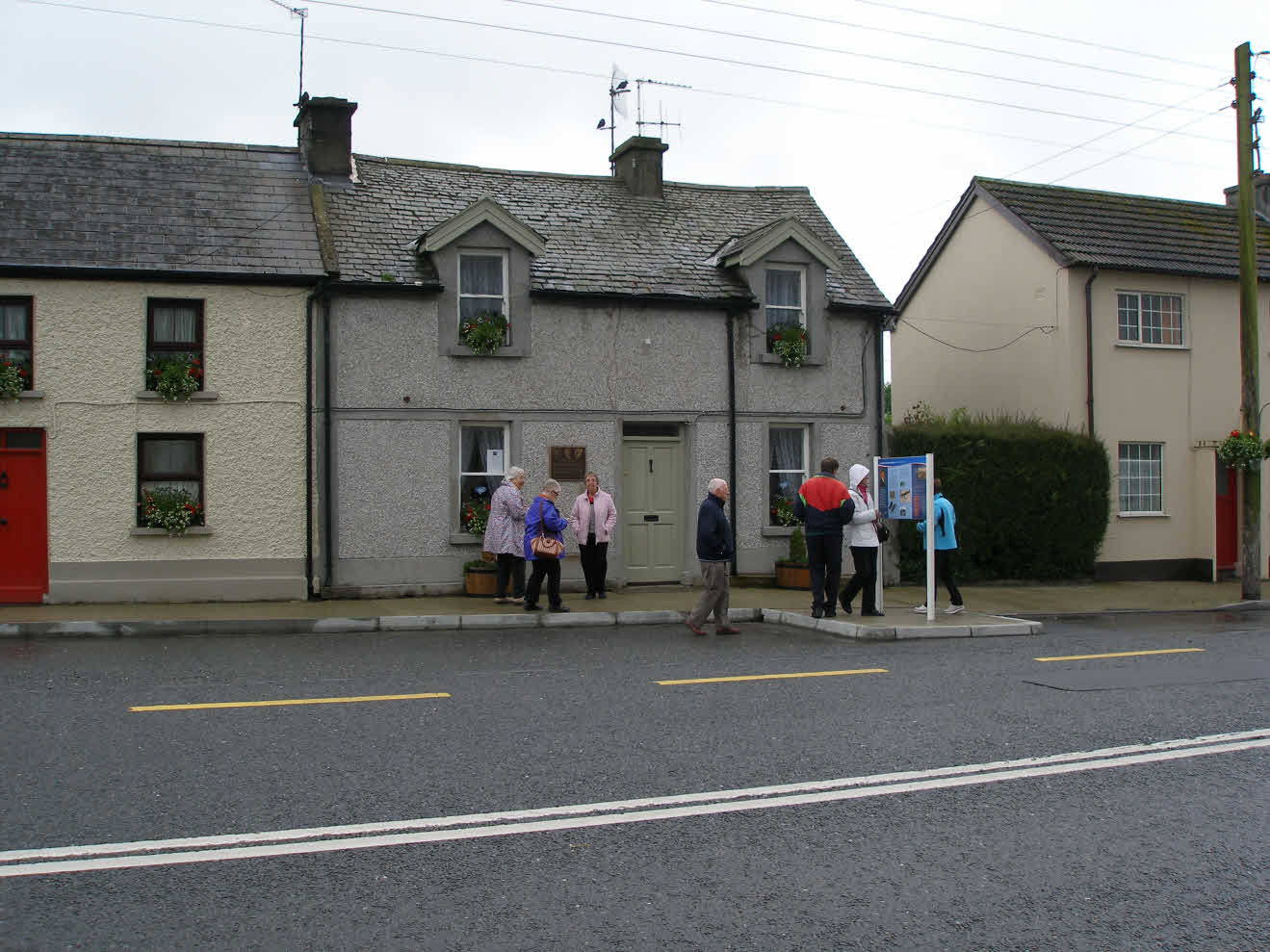
The left hand photo is the pub they visited and the right hand photo is the house where Obama's ancestor lived.
There is a plaque on the wall:
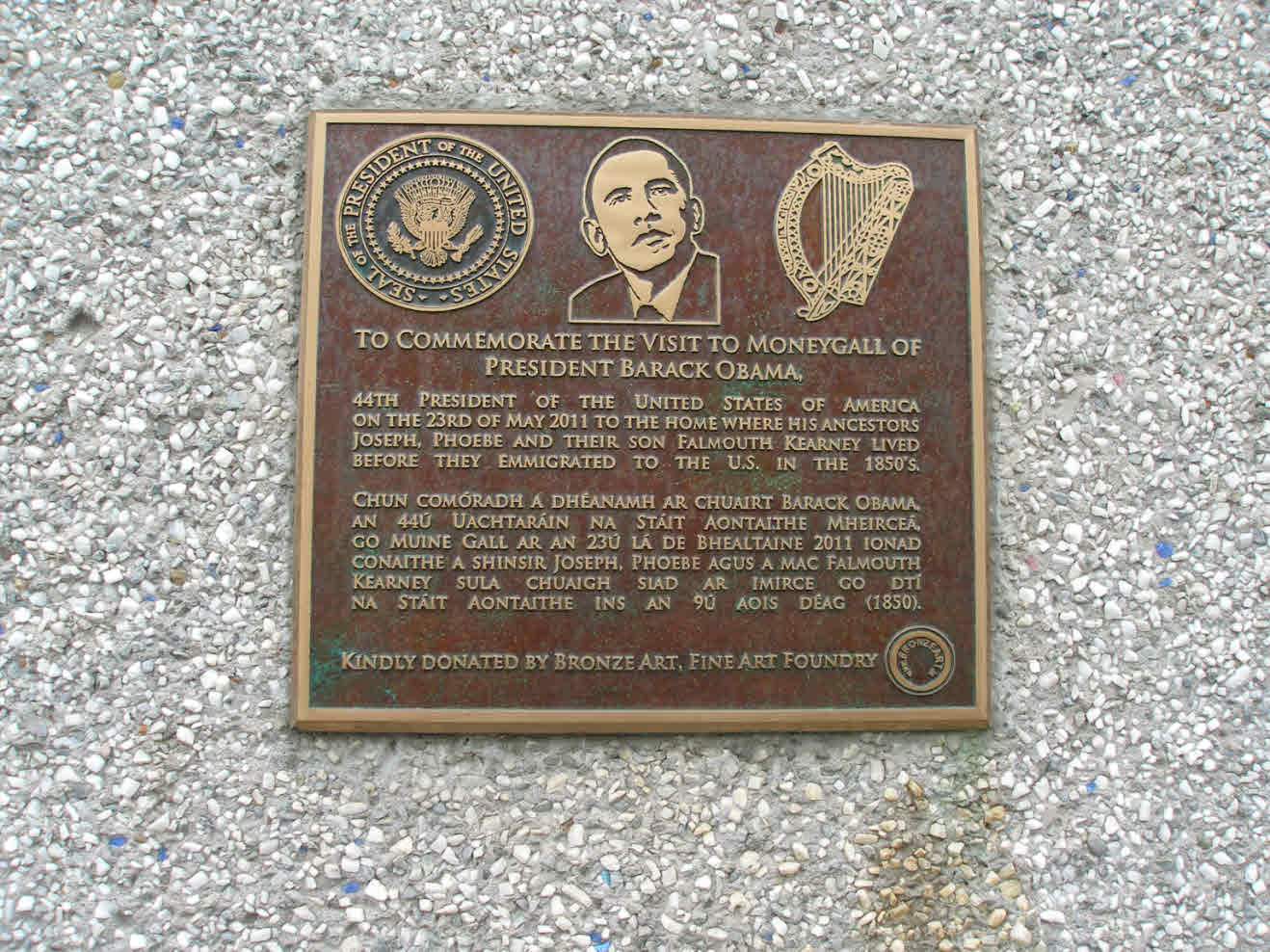
We reached Dublin in the late afternoon and booked into our hotel :
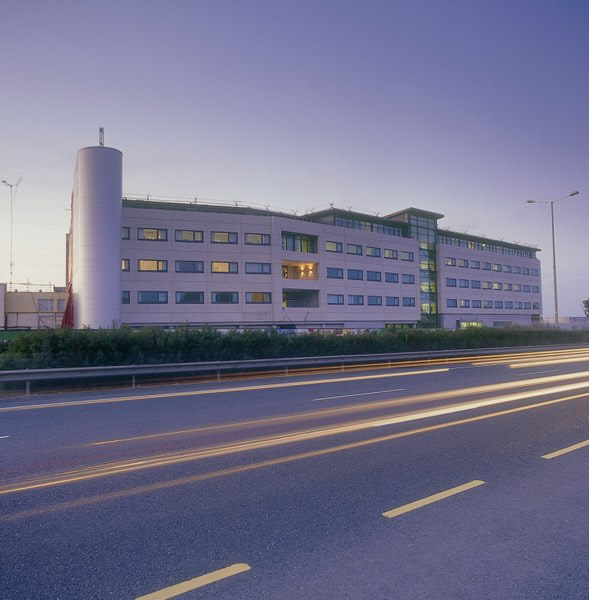
The Green Isle Hotel. After our evening meal there it started to rain. All through the night, and after breakfast, it was still raining when we set off for the ferry.
The ferry trip was quite good because we sat with an Australian chap who had his laptop open. For the next two hours we chatted "computers" and he was very pleased when I told him I would email him when I got home and provide his wife with a copy of sheet music called " Somewhere in France With You"
Well the rain never stopped whilst we continued our last leg of the journey home.
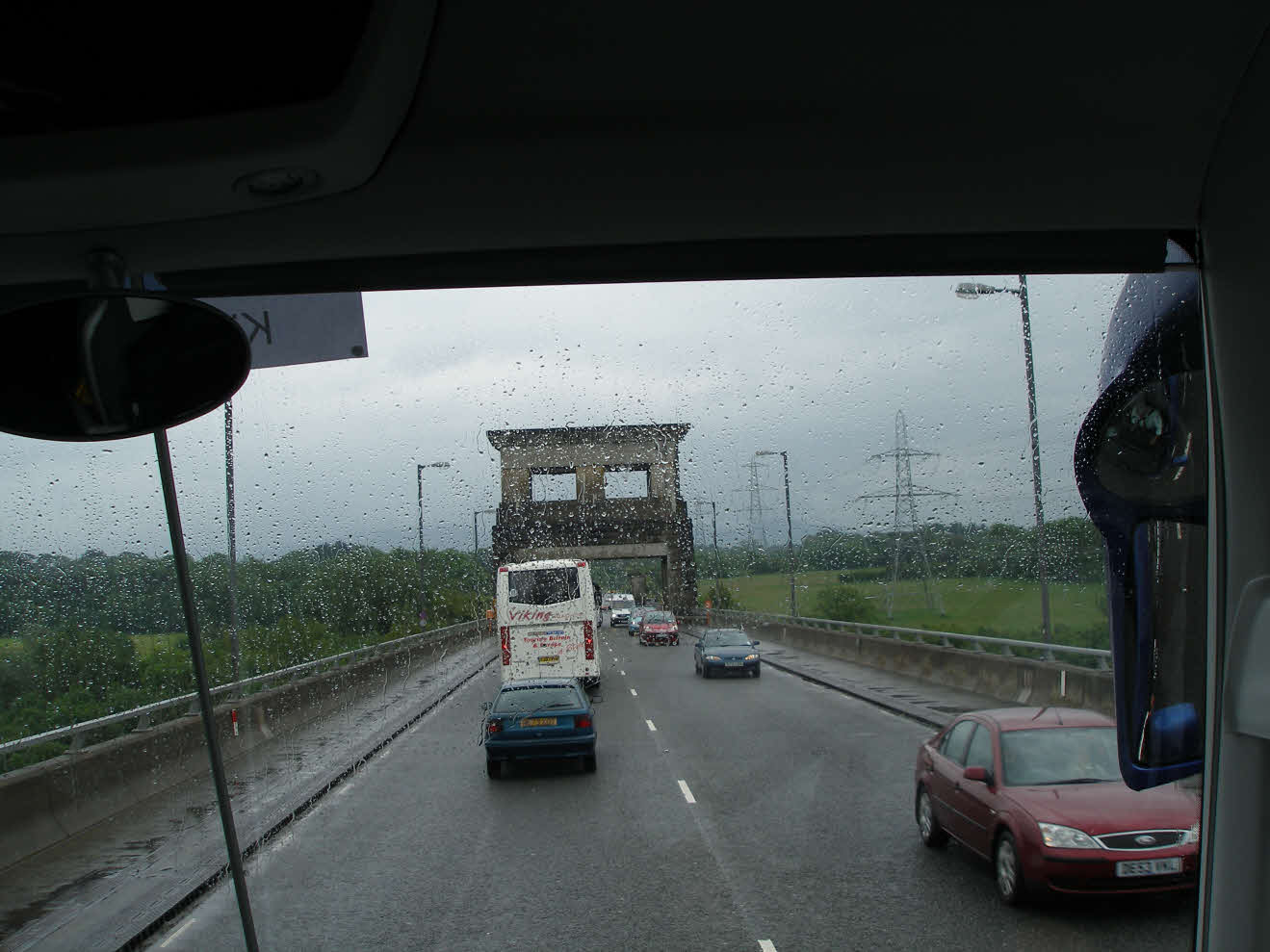
All the way through Angelsey, across the Menai Straits, and all the way home till we reached Sheffield then the sun came out!
We had a very enjoyable holiday and accomplished our desire to see the scenic attractions of Southern Ireland.
ANSWER: Ryan's Daughter and Far and Away.